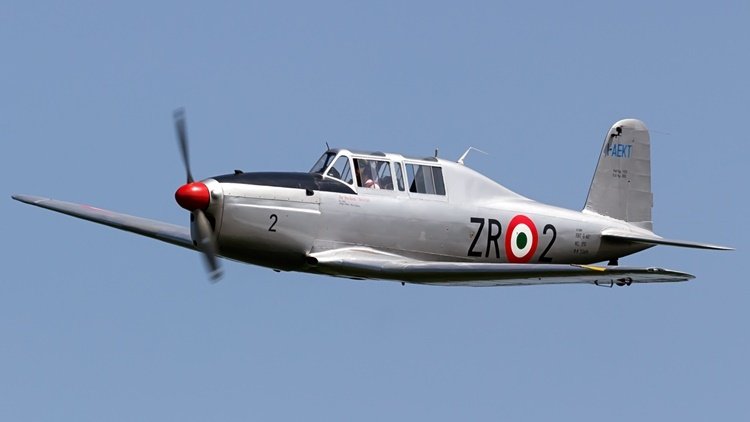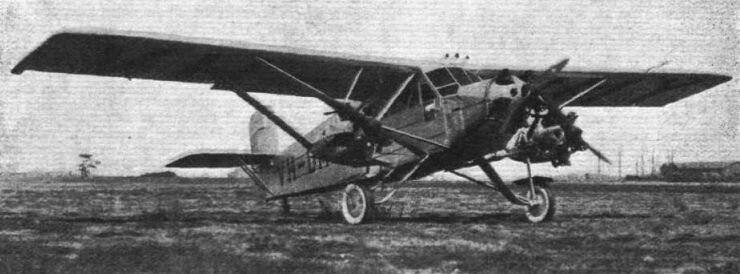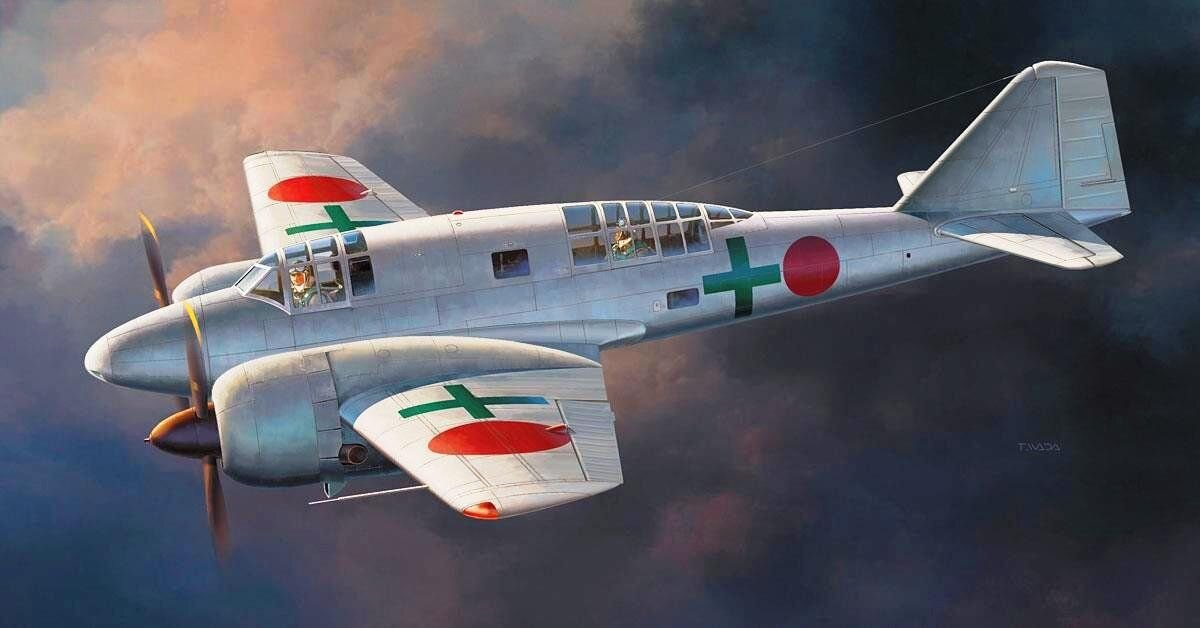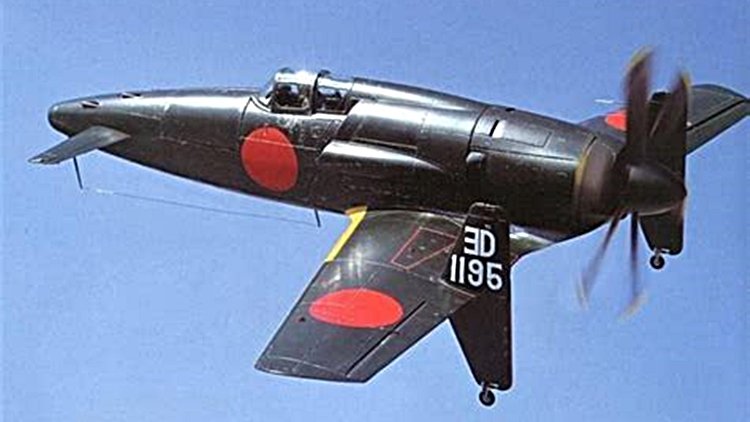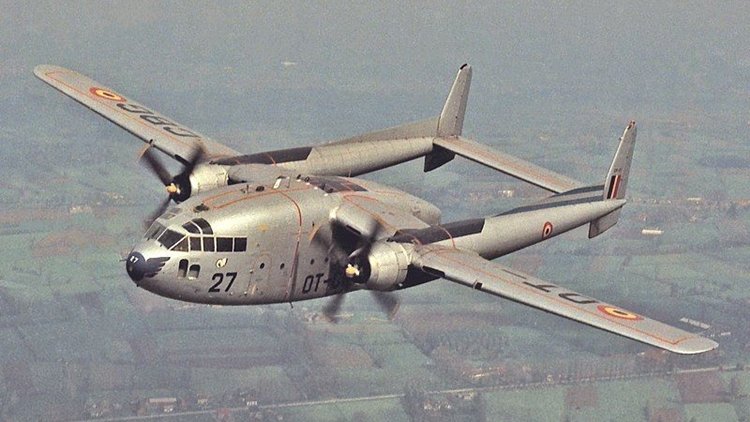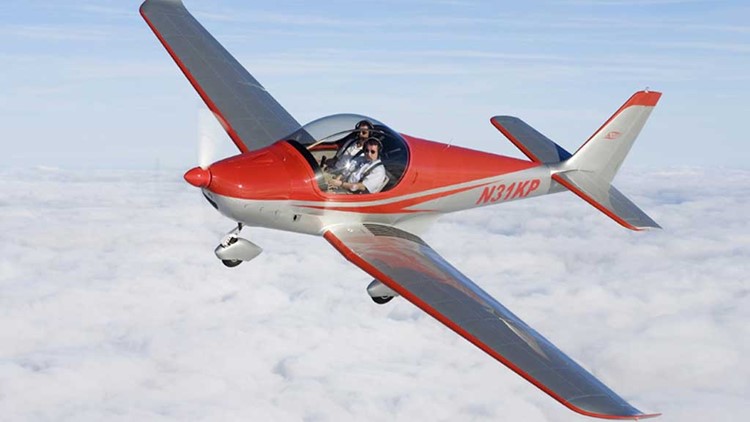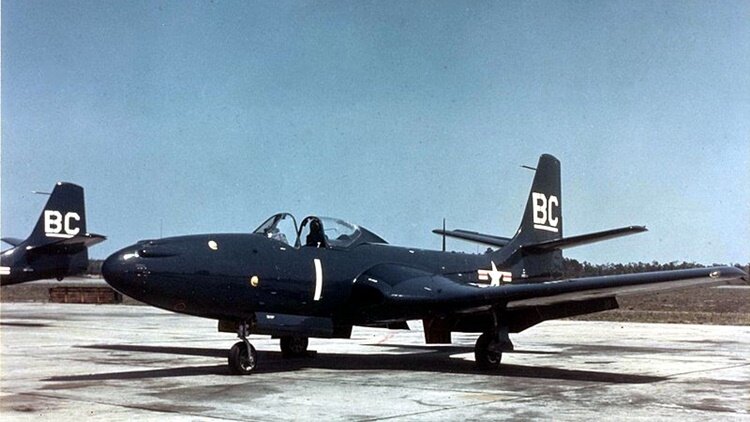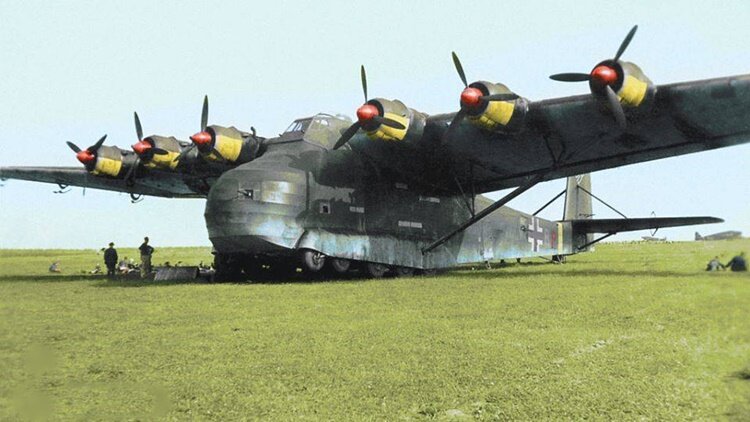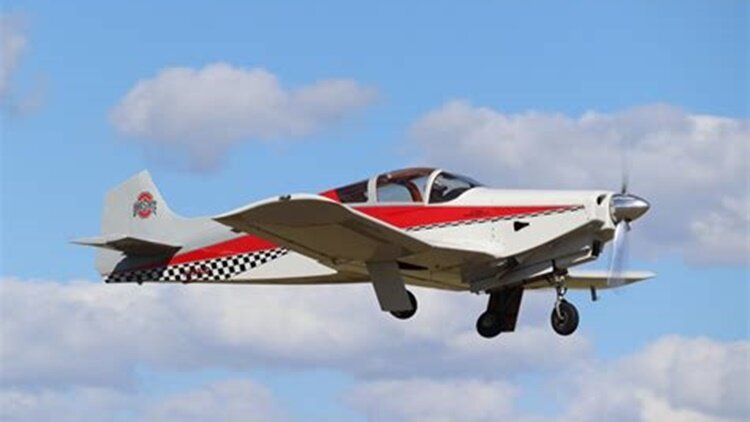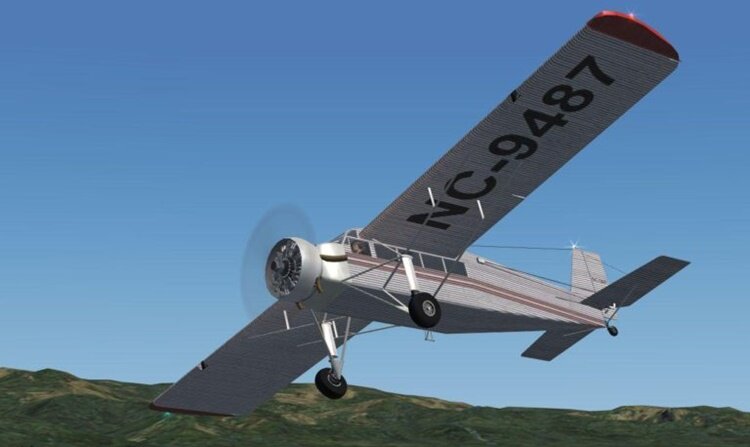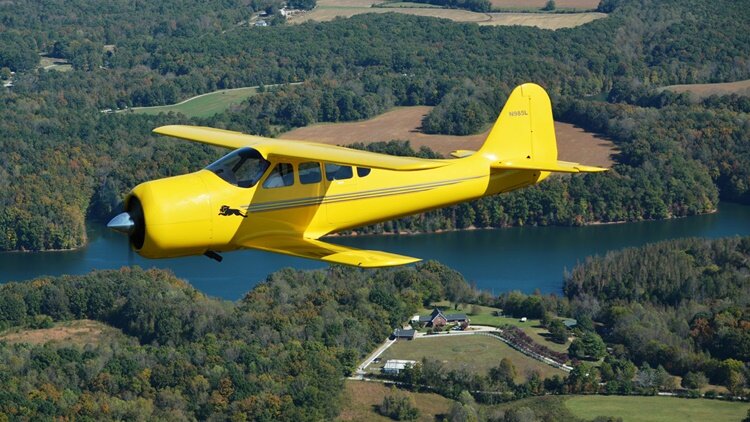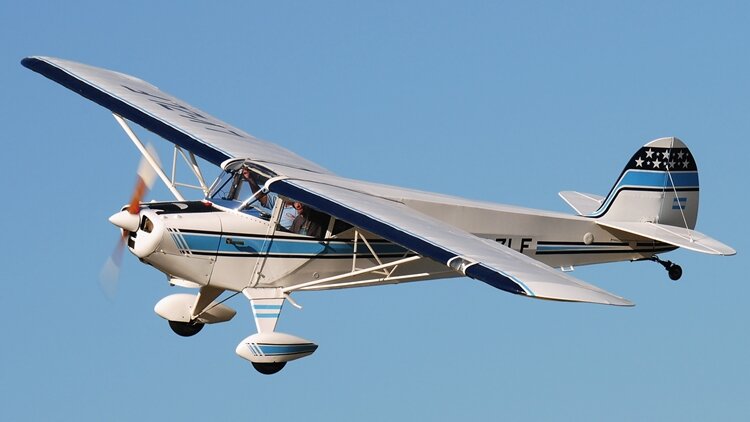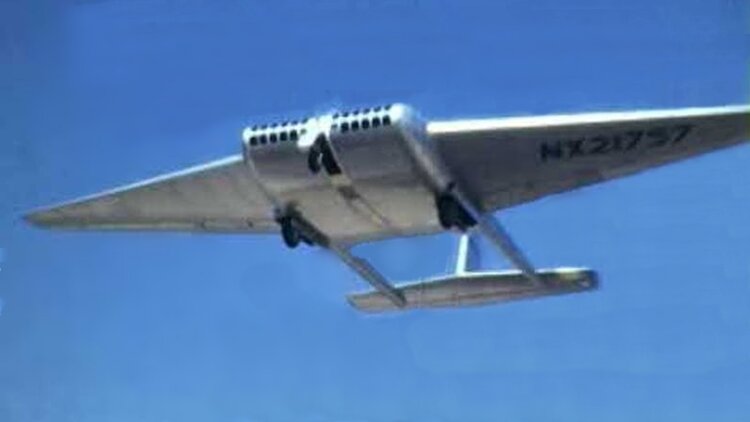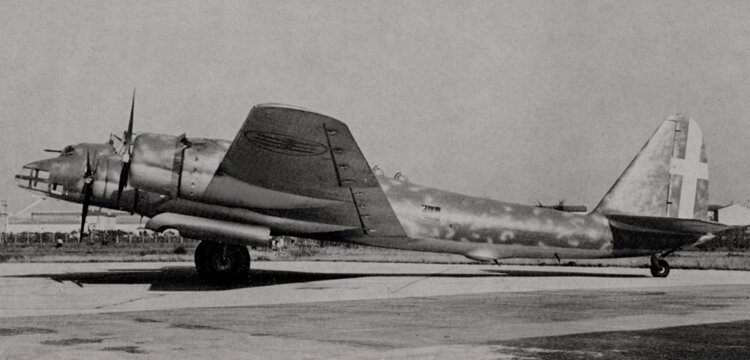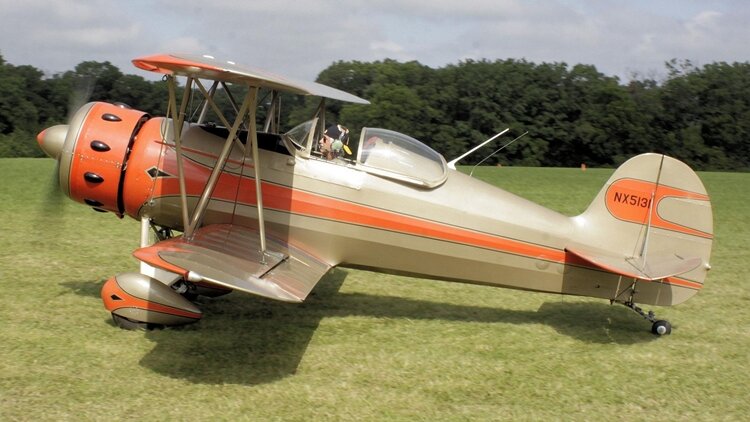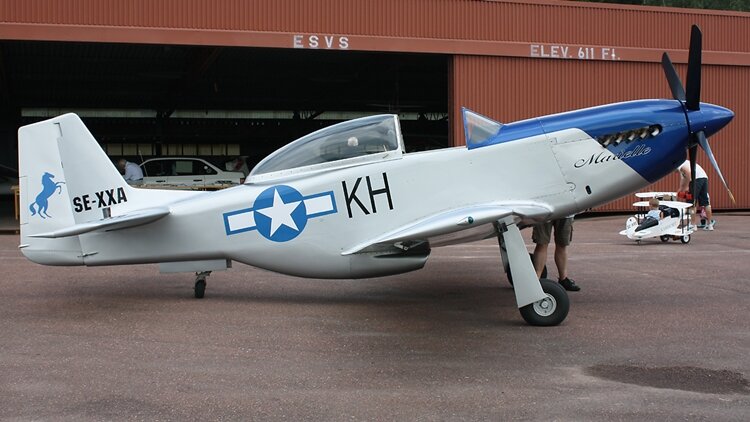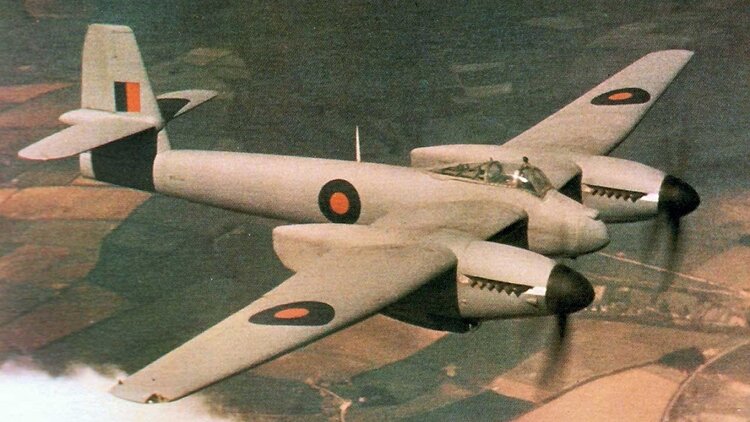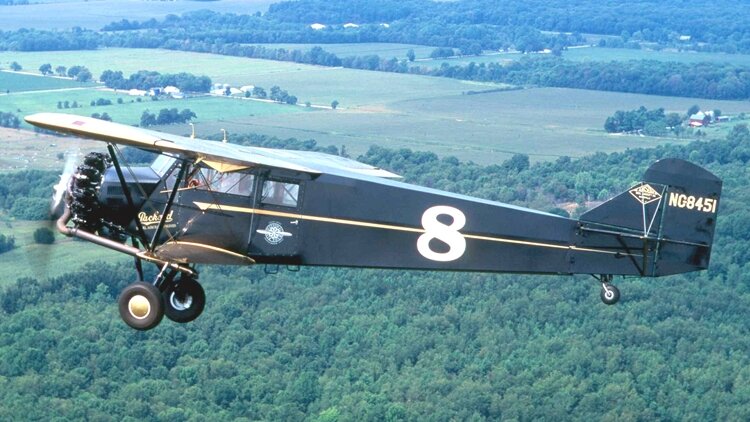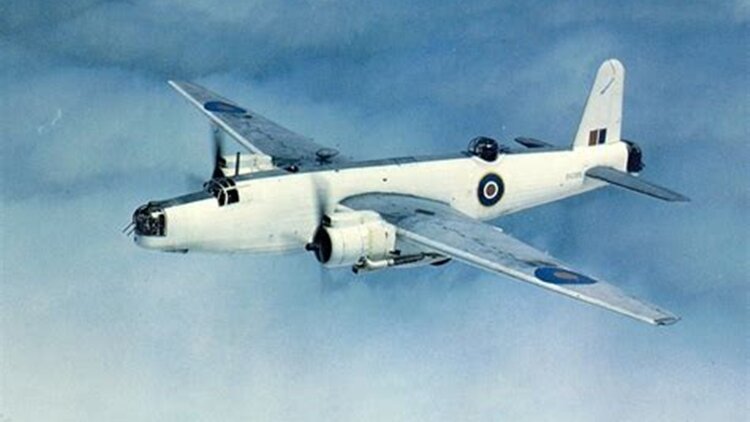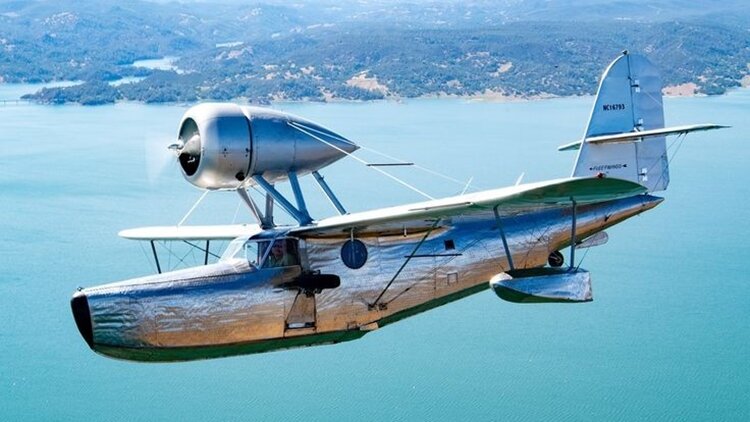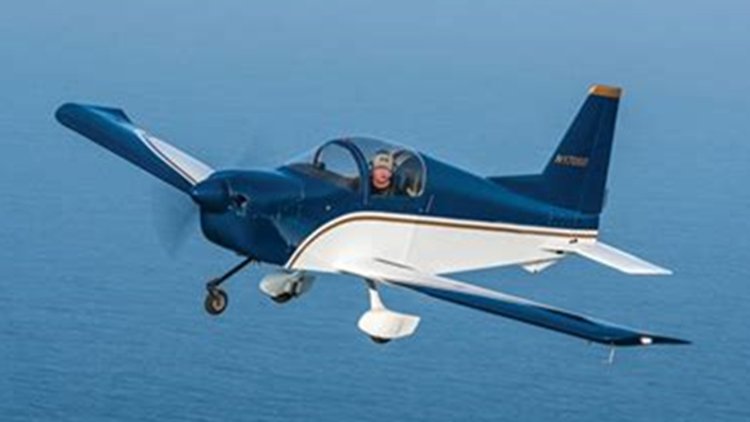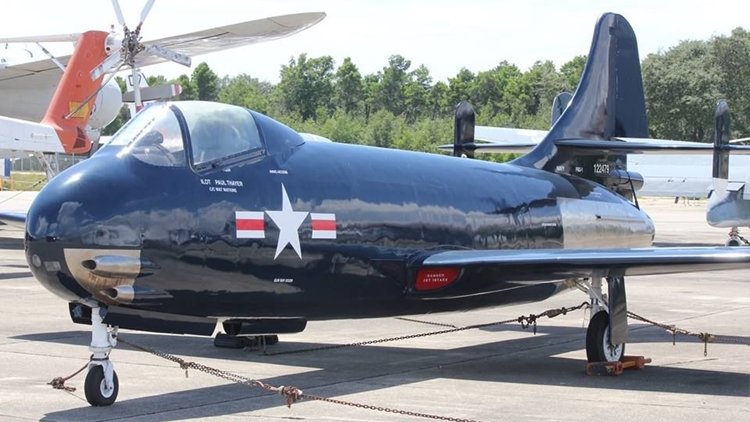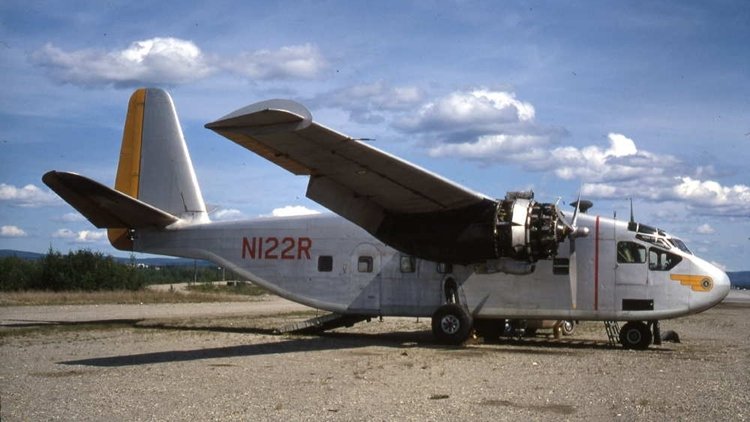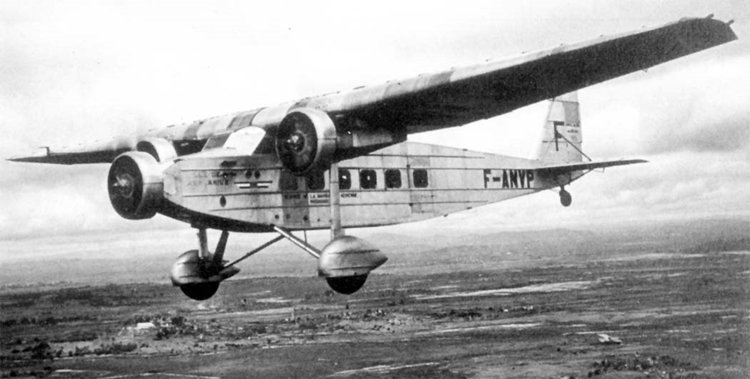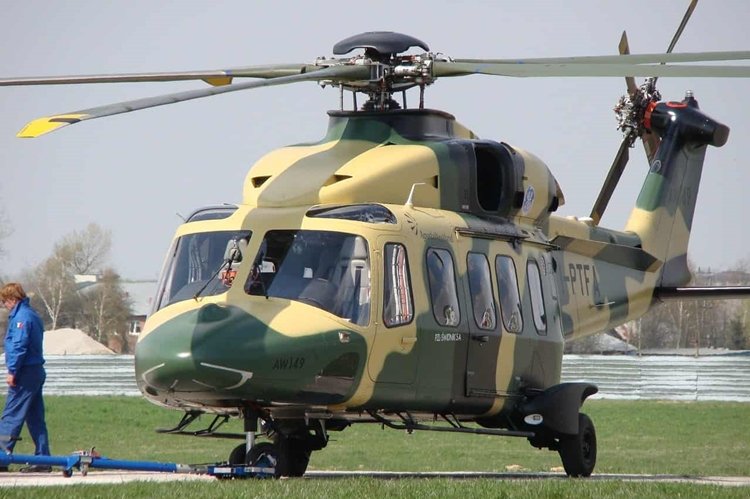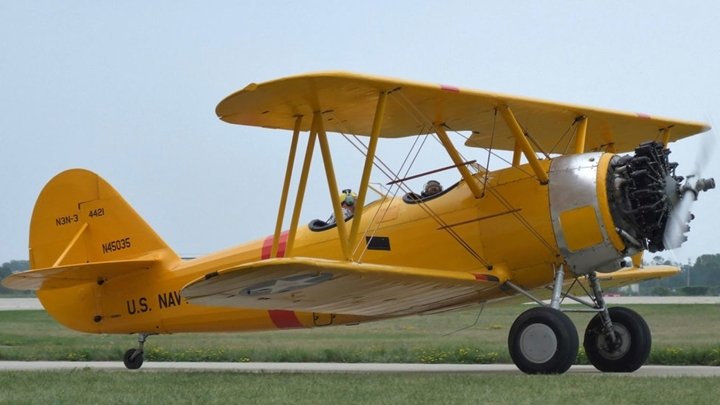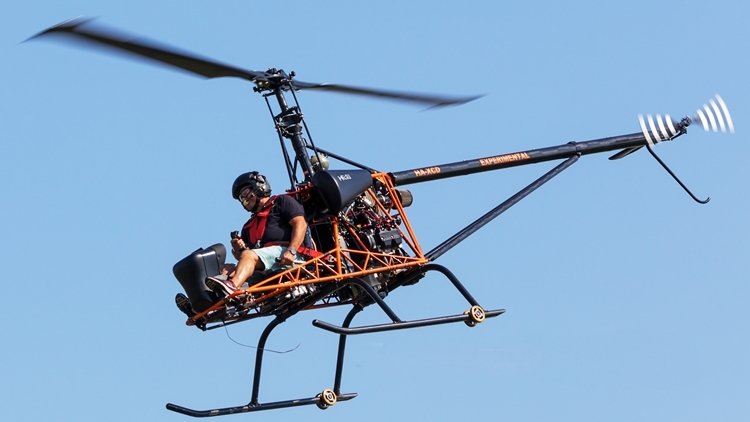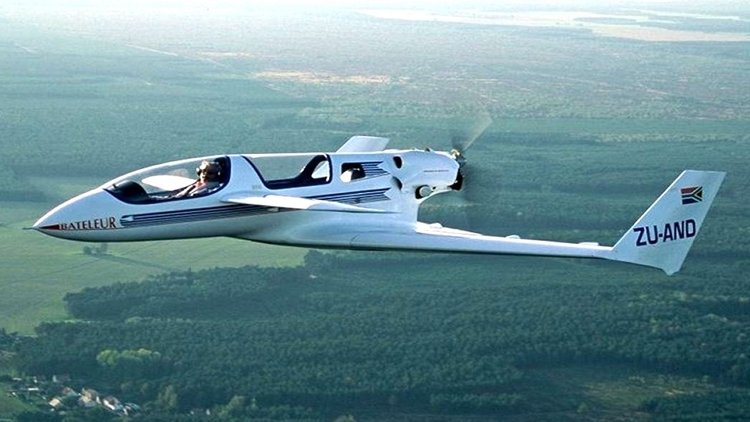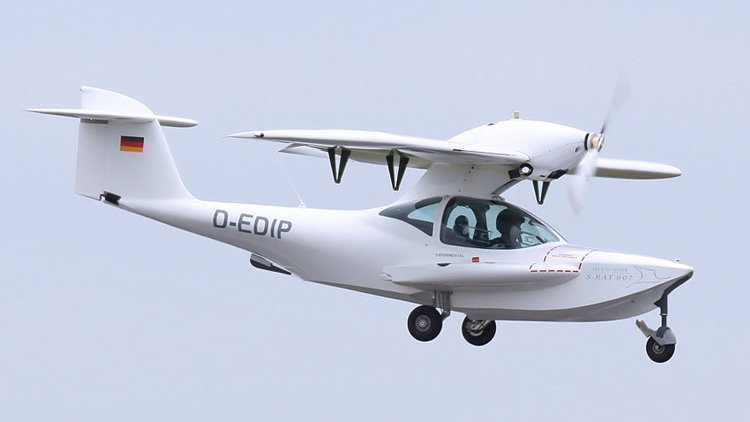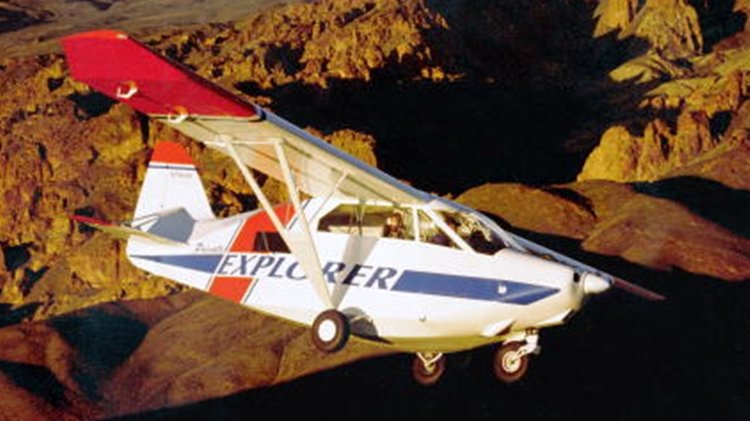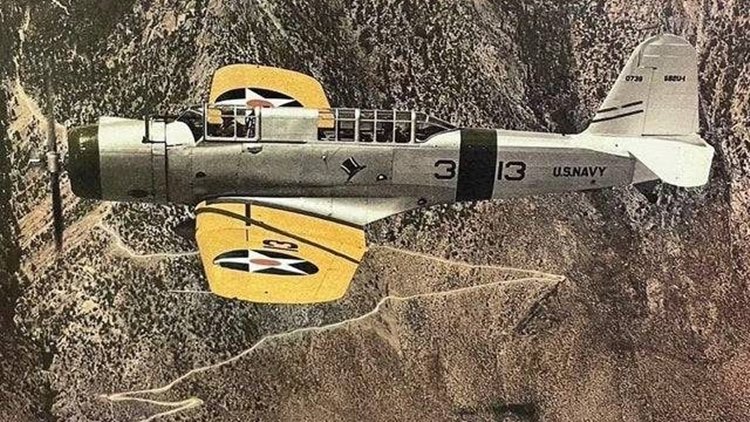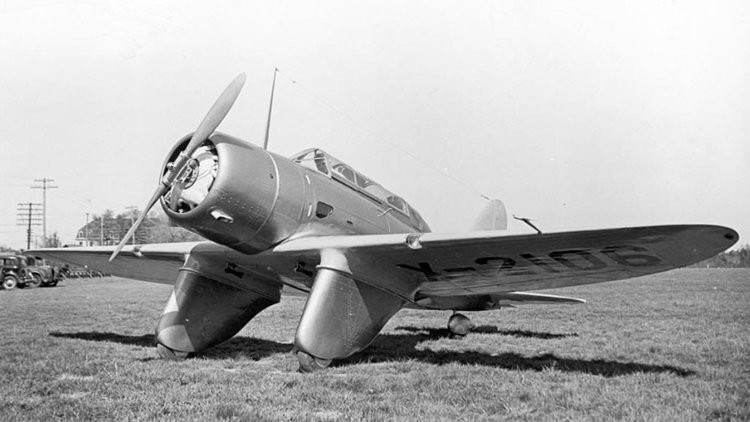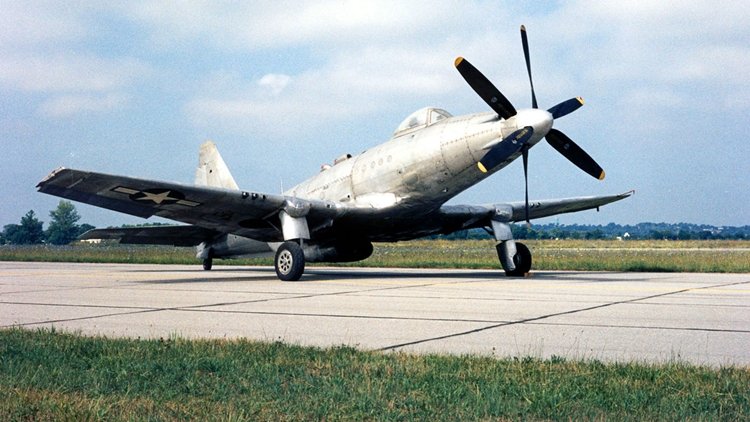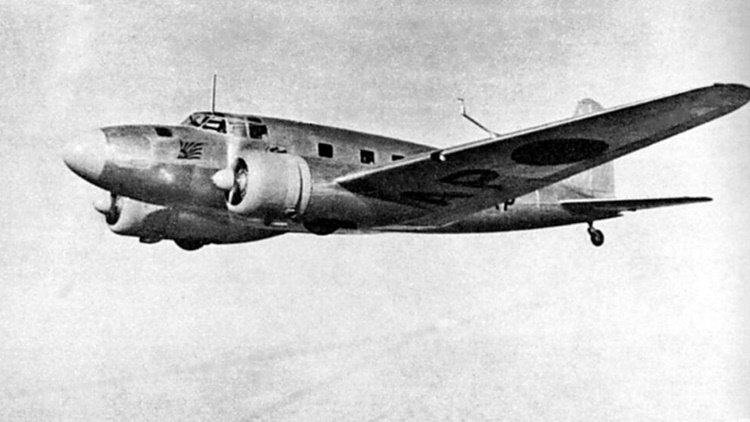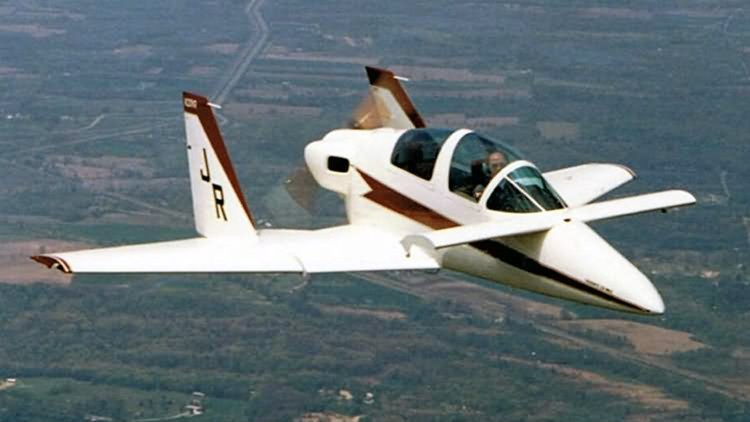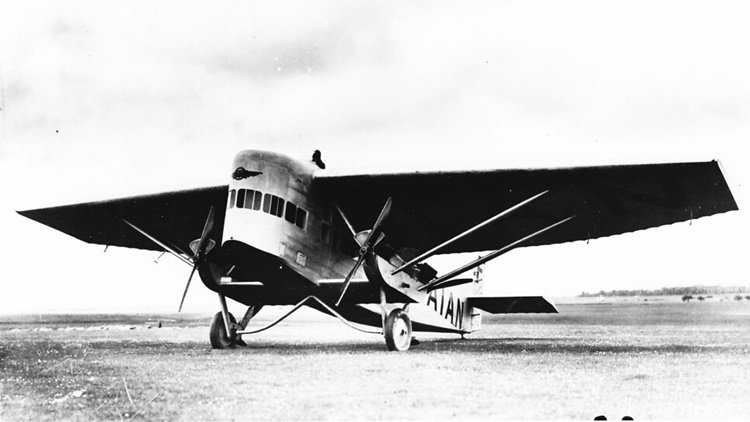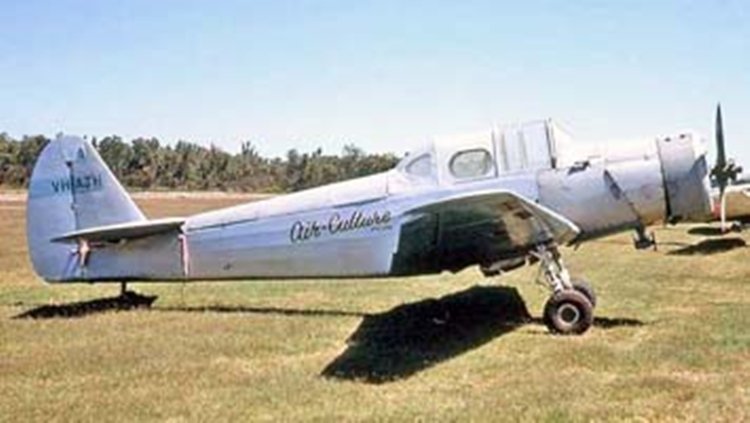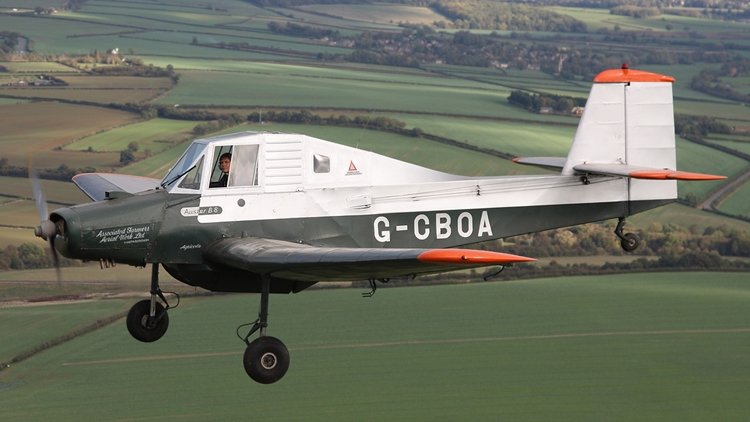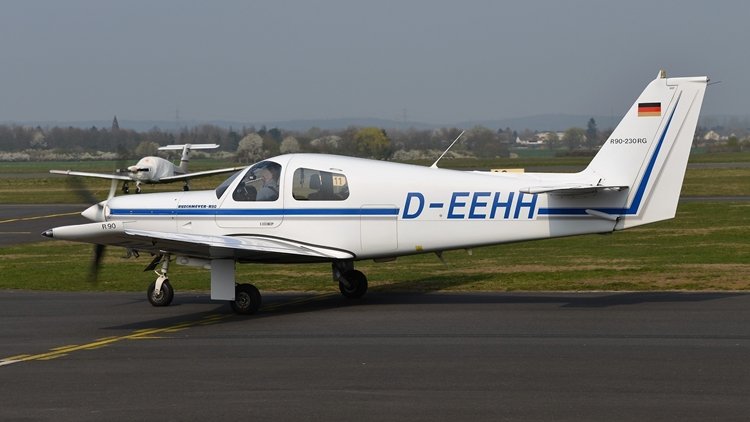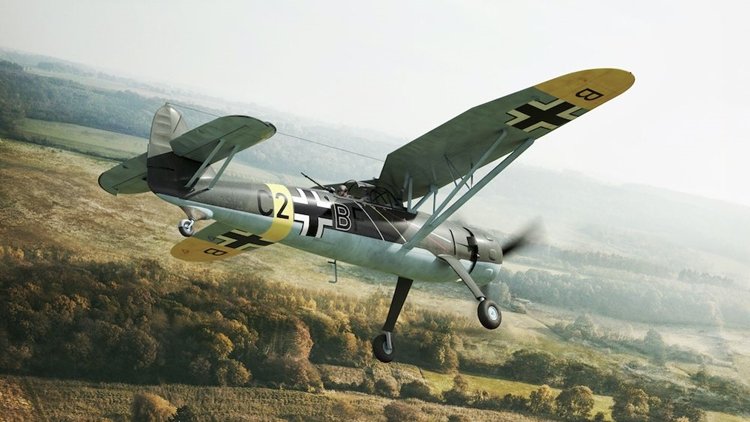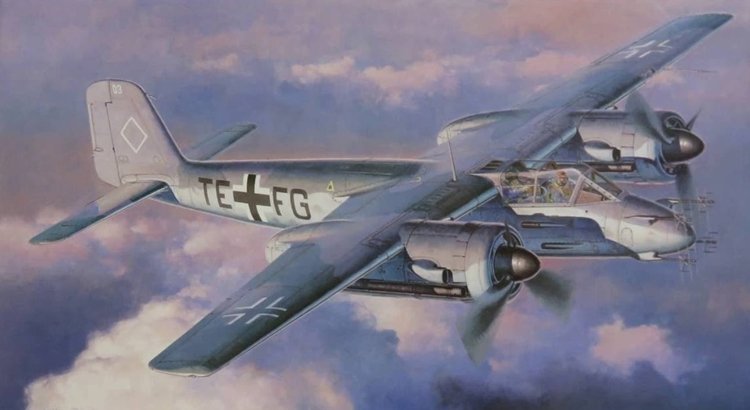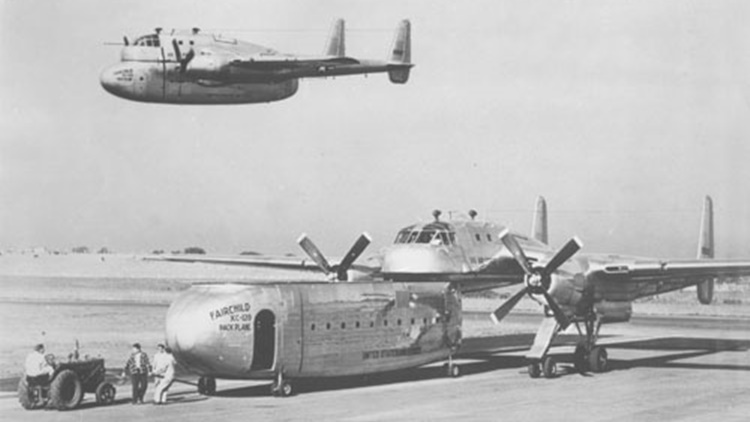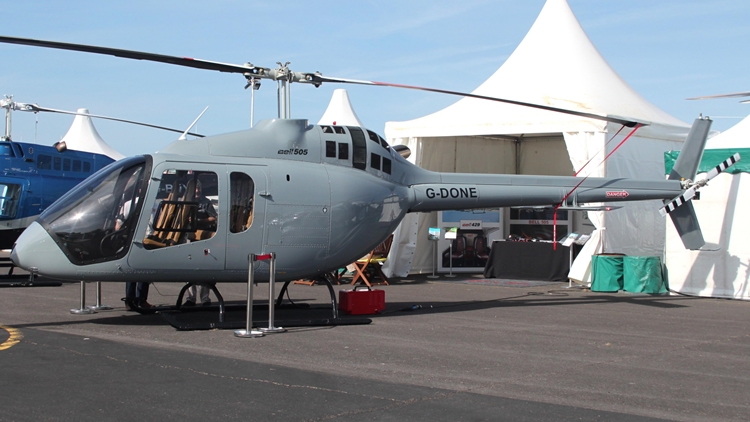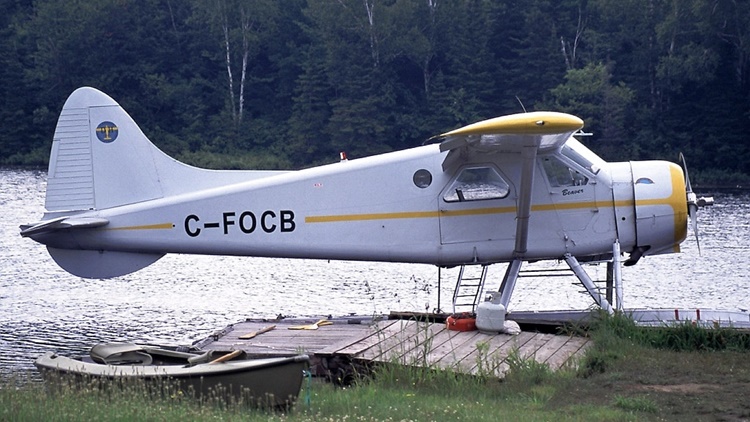Leaderboard
-
in Aircraft
- All areas
- Videos
- Video Comments
- Video Reviews
- Quizzes
- Quiz Comments
- Marker
- Marker Comments
- Books
- Bookshelves Comments
- Bookshelves Reviews
- Bookshelves
- Movies
- Movie Comments
- Movie Reviews
- Aircraft
- Aircraft Comments
- Resources
- Resource Comments
- Tutorials
- Tutorial Comments
- Articles
- Article Comments
- Classifieds
- Classified Comments
- Events
- Event Comments
- Blog Entries
- Blog Comments
- Files
- File Comments
- File Reviews
- Images
- Image Comments
- Albums
- Album Comments
- Topics
- Posts
- Status Updates
- Status Replies
-
Year
-
All time
January 7 2011 - July 17 2025
-
Year
July 17 2024 - July 17 2025
-
Month
June 17 2025 - July 17 2025
-
Week
July 10 2025 - July 17 2025
-
Today
July 17 2025
- Custom Date
-
All time
Popular Content
Showing content with the highest reputation since 17/07/24 in Aircraft
-
The G.46 was a conventional, low-wing monoplane with tailwheel undercarriage, the main units of which retracted inwards. The pilot and instructor sat in tandem under a long canopy. The first prototype, powered by a 205 hp (153 kW) Alfa Romeo 115-Ibis engine, made its maiden flight on 25 June 1947. Testing revealed excellent flying characteristics and suitability for aerobatics, and the type was ordered into production. Apart from the 150 ordered by the Aeronautica Militare, 70 aircraft were exported, to Austria, Argentina and Syria. Variants G.46-1B two-seater with Alfa Romeo 115bis engine, one prototype and initial production of 25 for the Italian Air Force. G.46-2B two-seater with de Havilland Gipsy Queen engine for the Argentine Air Force, 70 built with an additional 12 for the Syrian Air Force. G.46-3B two-seater with Alfa Romeo 115ter engine for the Italian Air Force, 25 built. G.46-4B two-seater with Alfa Romeo 115ter engine for the Italian Air Force, 55 built. G.46-5B two-seat navigation trainer (prototype only) G.46-4A single-seater with Alfa Romeo 115ter engine for the Italian Air Force, 35 built.3 points
-
The Lasco Lascondor (also frequently known by the misspelling "Lasconder") was a 1930s Australian 8-seat passenger and mail carrier aircraft built by the Larkin Aircraft Supply Company (Lasco) at Coode Island, Victoria. It is claimed to be the first multi-engined aircraft designed and built in the Southern Hemisphere. Development of the Lascondor began in June 1928, concurrently with the company's Lascoter; the two aircraft had 90% commonality of structural parts. Like the Lascoter the Lascondor was a high-wing monoplane with a tubular steel structure, featuring a tailwheel undercarriage and a fully enclosed cabin for the passengers and the pilot. A major change was the Lascondor's three Armstrong Siddeley Mongoose engines instead of the Lascoter's single more powerful Siddeley Puma engine. The Lascondor also had greater fuel capacity and a slightly longer fuselage with a redesigned cabin to accommodate an extra row of seats. In addition, while the Lascoter had two sets of flying controls in the cockpit the Lascondor had only one to allow for another passenger seat, giving an overall capacity of seven passengers and one pilot. The only available photo of the Lascondor.2 points
-
The Mitsubishi Ki-46 was a twin-engine reconnaissance aircraft that was used by the Imperial Japanese Army in World War II. Its Army Shiki designation was Type 100 Command Reconnaissance Aircraft (一〇〇式司令部偵察機); the Allied brevity code name was "Dinah". On 12 December 1937, the Imperial Japanese Army Air Force issued a specification to Mitsubishi for a long-range strategic reconnaissance aircraft to replace the Mitsubishi Ki-15. The specification demanded an endurance of six hours and sufficient speed to evade interception by any fighter in existence or development, but otherwise did not constrain the design by a team led by Tomio Kubo and Jojo Hattori. The resulting design was a twin-engined, low-winged monoplane with a retractable tailwheel undercarriage. It had a small diameter oval fuselage which accommodated a crew of two, with the pilot and observer situated in individual cockpits separated by a large fuel tank. Further fuel tanks were situated in the thin wings both inboard and outboard of the engines, giving a total fuel capacity of 1,490 L (328 imperial gallons). The engines, two Mitsubishi Ha-26s, were housed in close fitting cowlings developed by the Aeronautical Research Institute of the Tokyo Imperial University to reduce drag and improve pilot view. The first prototype aircraft, with the designation Ki-46, flew in November 1939 from the Mitsubishi factory at Kakamigahara, Gifu, north of Nagoya.[3] Tests showed that the Ki-46 was underpowered, and slower than required, only reaching 540 km/h (336 mph) rather than the specified 600 km/h (373 mph). Otherwise, the aircraft tests were successful. As the type was still faster than the Army's latest fighter, the Nakajima Ki-43, as well as the Navy's new A6M2, an initial production batch was ordered as the Army Type 100 Command Reconnaissance Plane Model 1 (Ki-41-I). To solve the performance problems, Mitsubishi fitted Ha-102 engines, which were Ha-26s fitted with a two-speed supercharger, while increasing fuel capacity and reducing empty weight. This version, designated Ki-46-II, first flew in March 1941. It met the speed requirements of the original specification, and was ordered into full-scale production, with deliveries starting in July. Although at first the Ki-46 proved almost immune from interception, the Imperial Japanese Army Air Force realised that improved Allied fighters such as the Supermarine Spitfire and P-38 Lightning could challenge this superiority, and in July 1942, it instructed Mitsubishi to produce a further improved version, the Ki-46-III. This had more powerful, fuel-injected Mitsubishi Ha-112 engines, and a redesigned nose, with a fuel tank ahead of the pilot and a new canopy, smoothly faired from the extreme nose of the aircraft, eliminating the "step" of the earlier versions. The single defensive machine gun of the earlier aircraft was omitted not long into the production run. The new version first flew in December 1942, demonstrating significantly higher speed 630 km/h (391 mph) at 6,000 m (19,700 ft). The performance of the Ki-46-III even proved superior to that of the aircraft intended to replace it (the Tachikawa Ki-70), which as a result did not enter production.[8] During operational testing in March 1944, it was discovered that replacing the engines' single exhaust collector ring with individual pipes provided extra thrust and an increase in top speed to 642 km/h (399 mph). In an attempt to yet further improve the altitude performance of the Ki-46, two prototypes were fitted with exhaust driven turbosupercharged Ha-112-II-Ru engines. This version first flew in February 1944, but only two prototypes were built. Mitsubishi factories made a total of 1,742 examples of all versions (34 x Ki-46-I, 1093 x Ki-46-II, 613 x Ki-46-III, 4 x Ki-46-IV) from 1941 to 1944. For details of operational history and 18 variants, click here.2 points
-
The Kyūshū J7W Shinden (震電, "Magnificent Lightning") is a World War II Japanese propeller-driven prototype fighter plane with wings at the rear of the fuselage, a nose-mounted canard, and a pusher engine. Developed by the Imperial Japanese Navy (IJN) as a short-range, land-based interceptor, the J7W was a response to Boeing B-29 Superfortress raids on the Japanese home islands. For interception missions, the J7W was to be armed with four forward-firing 30 mm type 5 cannons in the nose. The Shinden was expected to be a highly maneuverable interceptor, but only two prototypes were finished before the end of the war. A jet engine–powered version was considered, but never reached the drawing board. In the IJN designation system, "J" referred to land-based fighters and "W" to Watanabe Tekkōjo, the company that oversaw the initial design. The idea of a canard-based design originated with Lieutenant Commander Masayoshi Tsuruno, of the technical staff of the IJN in early 1943. Tsuruno believed the design could easily be retrofitted with a turbojet, when suitable engines became available. His ideas were worked out by the First Naval Air Technical Arsenal (Dai-Ichi Kaigun Koku Gijitsusho), which designed three gliders designated Yokosuka MXY6, featuring canards. These were built by Chigasaki Seizo K. K. and one was later fitted with a 22 hp Semi 11 (Ha-90) 4-cylinder air-cooled engine. The feasibility of the canard design was proven by both the powered and unpowered versions of the MXY6 by the end of 1943, and the Navy were so impressed by the flight testing, they instructed the Kyushu Aircraft Company to design a canard interceptor around Tsuruno's concept. Kyushu was chosen because both its design team and production facilities were relatively unburdened, and Tsuruno was chosen to lead a team from Dai-Ichi Kaigun Koku Gijitsusho to aid Kyushu's design works. The construction of the first two prototypes started in earnest by June 1944, stress calculations were finished by January 1945, and the first prototype was completed in April 1945. The 2,130 hp Mitsubishi MK9D (Ha-43) radial engine and its supercharger were installed behind the cockpit and drove a six-bladed propeller via an extension shaft. Engine cooling was to be provided by long, narrow, obliquely mounted intakes on the side of the fuselage. It was this configuration that caused cooling problems while running the engine while it was still on the ground. This, together with the unavailability of some equipment parts postponed the first flight of the Shinden. Even before the first prototype took to the air, the Navy ordered the J7W1 into production, with a quota of 30 Shinden a month given to Kyushu's Zasshonokuma factory and 120 from Nakajima's Handa plant. It was estimated some 1,086 Shinden could be produced between April 1946 and March 1947. On 3 August 1945, the prototype first flew, with Tsuruno at the controls, from Mushiroda Airfield. Two more short flights were made, a total of 45 minutes airborne, one each on the same days as the atomic bombings of Hiroshima and Nagasaki occurred, before the war's end. Flights were successful, but showed a marked torque pull to starboard (due to the powerful engine), some flutter of the propeller blades, and vibration in the extended drive shaft.2 points
-
The Cessna 190 and 195 Businessliner are a family of light single radial engine powered, conventional landing gear equipped, general aviation aircraft which were manufactured by Cessna between 1947 and 1954. The 195 model was also used by the United States Air Force, United States Army, and Army National Guard as a light transport and utility aircraft under the designations LC-126/U-20. The Cessna 190 and 195 were Cessna's only postwar radial-engined aircraft. The first prototype flew in 1945, after the end of World War II and both the 190 and 195 entered production in 1947. The 195 was the first Cessna airplane to be completely constructed of aluminum and features a cantilever wing, similar to the pre-war Cessna 165 from which it is derived. The wing differs from later Cessna light aircraft in that it has a straight taper from root chord to tip chord and no dihedral. The airfoil employed is a NACA 2412, the same as used on the later Cessna 150, 172 and 182. The 190/195 fuselage is large in comparison to other Cessna models because the 42" diameter radial engine had to be accommodated in the nose. There are two rows of seats: two individual seats in the first row, with a comfortable space between them and up to three passengers can be accommodated on a bench seat in the second row. The 190/195 has flat sprung-steel landing gear legs derived from Cessna's purchase of the rights to Steve Wittman's Big X. Many have been equipped with swiveling crosswind landing gear which allows landing with up to 15 degrees of crab. While the crosswind gear simplifies the actual landing, it makes the aircraft difficult to handle on the ground. The 195 is equipped with a retractable step that extends when the cabin door is opened, although some have been modified to make the step a fixed unit. The aircraft was expensive to purchase and operate for private use and Cessna therefore marketed them mainly as a business aircraft under the name "Businessliner". The engines fitted to the 190 and 195 became well known for their oil consumption. The aircraft has a 5-US-gallon (19 L) oil tank, with 2 US gallons (7.6 L) the minimum for flight. Typical oil consumption with steel cylinder barrels is 2 US quarts (1.9 L) per hour. A factory-produced floatplane version was equipped with a triple tail for improved yaw stability. The Cessna 195 produces a cruise true airspeed of 148 knots (274 km/h) (170 MPH) on a fuel consumption of 16 US gallons (61 L) per hour. It can accommodate five people. Including the LC-126s, a total of 1180 190s and 195s were built. The 190 was originally introduced at a price of USD$12,750 in 1947 (equivalent to $173,978 in 2023). When production ended in 1954 the price had risen to USD$24,700 (equivalent to $280,239 in 2023) for the 195B. This compared to USD$3,495 for the Cessna 140 two seater of the same period. Variants The main difference between the 190 and the 195 models was the engine installed. 190 Powered by a Continental W670-23 engine of 240 hp (180 kW) and first certified on 1 July 1947. 195 (Specifications below) Powered by a Jacobs R-755A2 engine of 300 hp (225 kW) and first certified on 12 June 1947. 195A Powered by a Jacobs L-4MB (R-755-9) engine of 245 hp (184 kW) and first certified on 6 January 1950. 195B Powered by a Jacobs R-755B2 engine of 275 hp (206 kW) and first certified on 31 March 1952. It featured flaps increased in area by 50% over earlier models. LC-126A Military designation for the Cessna 195, five-seat communication aircraft for the US Army, it could be fitted with skis or floats, 15 built. LC-126B Similar aircraft to the LC-126 for Air National Guard use, five built. LC-126C Variant of the LC-126A for instrument training/liaison, 63 built. U-20B LC-126B redesignated by the USAF after 1962. U-20C LC-126C redesignated by the USAF after 1962.2 points
-
The Fairchild C-119 Flying Boxcar (Navy and Marine Corps designation R4Q) is an American military transport aircraft developed from the World War II-era Fairchild C-82 Packet, designed to carry cargo, personnel, litter patients, and mechanized equipment, and to drop cargo and troops by parachute. The first C-119 made its initial flight in November 1947, and by the time production ceased in 1955, 1,183 had been built. The Air Force C-119 and Navy R4Q was initially a redesign of the earlier C-82 Packet, built between 1945 and 1948. The Packet had provided limited service to the Air Force's Tactical Air Command and Military Air Transport Service before its design was found to have several serious problems. Though it continued in service until replaced, all of these were addressed in the C-119, which had its first test flight already in 1947. To improve pilot visibility, enlarge the cargo area, and streamline aerodynamics, the C-119 cockpit was moved forward to fit flush with the nose, rather than over the cargo compartment. The correspondingly longer fuselage resulted in more usable cargo space and larger loads than the C-82 could accommodate. The C-119 also got new engines, with 60% more power, four-bladed props to three, and a wider and stronger airframe. The first C-119 prototype (called the XC-82B) made its initial flight in November 1947, with deliveries of C-119Bs from Fairchild's Hagerstown, Maryland factory beginning in December 1949. In 1951, Henry J. Kaiser was awarded a contract to assemble additional C-119s at the Kaiser-Frazer automotive factory located in the former B-24 plant at Willow Run Airport in Belleville, Michigan. Initially, the Kaiser-built C-119F differed from the Fairchild aircraft by the use of Wright R-3350-85 Duplex Cyclone engines in place of Fairchild's use of the Pratt & Whitney R-4360 Wasp Major radial engine. Kaiser built 71 C-119s at Willow Run in 1952 and 1953 (AF Ser. No. 51-8098 to 51-8168) before converting the factory for a planned production of the Chase C-123 that never eventuated. The Kaiser sub-contract was frowned upon by Fairchild, and efforts were made through political channels to stop Kaiser's production, which may have proven successful. Following Kaiser's termination of C-119 production the contract for the C-123 was instead awarded to Fairchild. Most Kaiser-built aircraft were issued to the U.S. Marine Corps as R4Qs, with several later turned over to the South Vietnamese air force in the 1970s, a few others were later shipped to Belgium and Italy. The AC-119G Shadow gunship variant was fitted with four six-barrel 7.62 mm (0.300 in) NATO miniguns, armor plating, flare launchers, and night-capable infrared equipment. Like the AC-130 that replaced it, the AC-119 proved to be a potent weapon. The AC-119 was made more deadly by the introduction of the AC-119K Stinger version, which featured the addition of two General Electric M61 Vulcan 20 mm (0.79 in) cannon, improved avionics, and two underwing-mounted General Electric J85-GE-17 turbojet engines, adding nearly 6,000 lbf (27 kN) of thrust. Other major variants included the EC-119J, used for satellite tracking, and the YC-119H Skyvan prototype, with larger wings and tail. In civilian use, many C-119s feature the "Jet-Pack" modification, which incorporates a 3,400 lbf (15,000 N) Westinghouse J34 turbojet engine in a nacelle above the fuselage. For details of operational history and 21 variants, click here.2 points
-
It is a conventional low-wing monoplane featuring all-metal construction and tricycle undercarriage. Jilhavan Aircraft built the Kappa Sova for Kappa 77 from 1997 to 2004 and obtained marketing rights in 2005 when Kappa became insolvent. They became a subsidiary of Skyleader Aircraft in 2008 when the type was redesignated Jihlavan Skyleader. It is an all-metal design apart from a carbon fibre cockpit frame. It has two-spar tapered wings with 6° of dihedral, electrically operated Fowler flaps and upturned Küchemann tips. The fin and rudder are swept. The straight tapered tailplane is set on top of the fuselage, the port elevator carrying a trim tab. The original Sova/Skyleader 150 has staggered side-by-side configuration seating with the starboard seat 200 mm (8 in) aft of the other, but a widened fuselage allows the Skyleader 200 to have true side-by-side seating. The earlier version has a forward-hinged canopy with fixed rear transparencies; the Skyleader 200 has a single-piece canopy. Both these variants normally have an electrically actuated tricycle undercarriage with a steerable nosewheel, though a fixed version is an option and is standard on the later Skyleader 500 and 600 variants. For more details of the development and design, operational history and variants, click here. Specifications below are for the KP-2U Sova variant.2 points
-
The McDonnell FH Phantom is a twinjet, straight-wing, carrier-based fighter aircraft designed and first flown during late World War II for the United States Navy. As a first-generation jet fighter, the Phantom was the first purely jet-powered aircraft to land on an American aircraft carrier and the first jet deployed by the United States Marine Corps. Although only 62 FH-1s were built it helped prove the viability of carrier-based jet fighters. As McDonnell's first successful fighter, it led to the development of the follow-on F2H Banshee, which was one of the two most important naval jet fighters of the Korean War; combined, the two established McDonnell as an important supplier of navy aircraft. McDonnell chose to bring the name back with the third-generation, Mach 2-capable McDonnell Douglas F-4 Phantom II, the most versatile and widely used Western combat aircraft of the Vietnam War era. The FH Phantom was originally designated the FD Phantom, but this was changed as the aircraft entered production. In early 1943, aviation officials at the United States Navy were impressed with McDonnell's audacious XP-67 Bat project. McDonnell was invited by the navy to cooperate in the development of a shipboard jet fighter, using an engine from the turbojets under development by Westinghouse Electric Corporation. Three prototypes were ordered on 30 August 1943 and the designation XFD-1 was assigned. Under the 1922 United States Navy aircraft designation system, the letter "D" before the dash designated the aircraft's manufacturer. The Douglas Aircraft Company had previously been assigned this letter, but the USN elected to reassign it to McDonnell because Douglas had not provided any fighters for navy service in years. McDonnell engineers evaluated a number of engine combinations, varying from eight 9.5 in (24 cm) diameter engines down to two engines of 19 inches (48 cm) diameter. The final design used the two 19 in (48 cm) engines after it was found to be the lightest and simplest configuration. The engines were buried in the wing root to keep intake and exhaust ducts short, offering greater aerodynamic efficiency than underwing nacelles, and the engines were angled slightly outwards to protect the fuselage from the hot exhaust blast. Placement of the engines in the middle of the airframe, behind the center of gravity, required the cockpit with its bubble-style canopy to be placed ahead of the wing, also granting the pilot excellent visibility in all directions. The long nose allowed designers to use tricycle gear, thereby elevating the engine exhaust path and reducing the risk that the hot blast would damage the aircraft carrier deck. The construction methods and aerodynamic design of the Phantom were fairly conventional for the time; the aircraft had unswept wings, a conventional empennage, and an aluminum monocoque structure with flush riveted aluminum skin. Folding wings were used to reduce the width of the aircraft in storage configuration. Provisions for four .50-caliber (12.7 mm) machine guns were made in the nose, while racks for eight 5 in (130 mm) High Velocity Aircraft Rockets could be fitted under the wings, although these were seldom used in service. Adapting a jet to carrier use was a much greater challenge than producing a land-based fighter because of slower landing and takeoff speeds required on a small carrier deck. The Phantom used split flaps on both the folding and fixed wing sections to enhance low-speed landing performance, but no other high-lift devices were used. Provisions were also made for Rocket Assisted Take Off (RATO) bottles to improve takeoff performance. For more details of development. operational history and variants, click here.1 point
-
The Messerschmitt Me 323 Gigant ("Giant") was a German military transport aircraft of World War II. It was a powered variant of the Me 321 military glider and was the largest land-based transport aircraft to fly during the war. In total, 213 were made, with 15 being converted from the Me 321. The Me 323 was the result of a 1940 German requirement for a large assault glider in preparation for Operation Sea Lion, the projected invasion of Great Britain. The DFS 230 light glider had already proven its worth in the Battle of Fort Eben-Emael in Belgium (the first ever assault by gliderborne troops), and would later be used in the invasion of Crete in 1941. However, in order to mount an invasion across the English Channel, the Germans would need to be able to airlift vehicles and other heavy equipment as part of an initial assault wave. Although Operation Sea Lion was cancelled, the requirement for a heavy air transport capability remained, with the focus shifting to the forthcoming Operation Barbarossa, the invasion of the Soviet Union. Early in 1941, as a result of feedback from Transport Command pilots in Russia, the decision was taken to produce a motorized variant of the Me 321, to be designated Me 323. French Gnome et Rhône GR14N radial engines, rated at 1,180 PS (1,164 hp, 868 kW) for take-off as used in the Bloch MB.175 aircraft were chosen for use. This would reduce the burden on Germany's strained industry. Like the Me 321, the Me 323 had massive, semicantilever, high-mounted wings, which were braced from the fuselage out to the middle of the wing. To reduce weight and save aluminium, much of the wing was made of plywood and fabric, while the fuselage was of metal-tube construction with wooden spars and covered with doped fabric, with heavy bracing in the floor to support the payload. The "D" series had a crew of five - two pilots, two flight engineers, and a radio operator. Two gunners could also be carried. The flight engineers occupied two small cabins, one in each wing between the inboard and centre engines. The engineers were intended to monitor engine synchronisation and allow the pilot to fly without worrying about engine status, although the pilot could override the engineers' decisions on engine and propeller control. For more details of development, design, operational history and 18 variants, click here.1 point
-
The Jeffair Barracuda is a high-performance sporting monoplane that was developed in the United States in the 1970s and is marketed for homebuilding. Designed and built by Geoffrey Siers, the prototype won the prize for "Most Outstanding New Design" at the EAA Fly-in in 1976. It was a low-wing cantilever monoplane of wooden construction with retractable tricycle undercarriage and side-by-side seating for two. Around 150 sets of plans had sold by 1977. Geoffrey Siers was a former RAF pilot and engineer for Boeing in 1967. He set out to design an aircraft that was fast, aerobatic, two place, and had range to fly long cross-country flights. The aircraft was refined after a full size cockpit mockup was made. The lightweight construction of the plywood-covered wooden de Havilland Mosquito was the inspiration for the materials choice. The retractable landing gear came from a Piper PA-24 Comanche. The wings were a three-piece design. Test flights were performed in 1975. The aircraft takes off at 70 mph (113 km/h) and climbs at 2000 feet per minute (10.2 m/s). Full flap stalls were recorded as low as 54 mph (87 km/h).1 point
-
The Metal Aircraft Flamingo was a monoplane produced in Cincinnati, Ohio by the Metal Aircraft Corporation in the 1930s. The Metal Aircraft Corporation purchased the design from the Halpin Development Co. and unveiled it at the 1929 National Air Races with Elinor Smith. Following an accident at Bowman Field in May 1928, the prototype Flamingo was redesigned with a different nose, windscreen, and tail. The interior was insulated with Balsam-Wool Blanket. The Flamingo was first flown from Lunken Airport on 8 April 1928 by Thomas E. Halpin. At one point, the aircraft carried an African-American porter in a red suit named Benny Smith. Following a teaser, marketing for the new airplane began in March 1929 and dealers were being solicited by the following month. One G-2-W, named El Rio Caroní, is best remembered for its role in the discovery of Angel Falls by Jimmy Angel in 1935. Although well known to the local indigenous population, the falls had been glimpsed only by European explorers until Jimmy Angel crash-landed while attempting to land above the falls on Auyán-tepui during gold exploration. The Metal Aircraft Corporation Flamingo that crashed above the falls was recovered by helicopter in the 1960s by the Venezuelan government and is on display at the entrance of the Ciudad Bolívar airport, in Venezuela. A replica was put in its place for visitors of the crash site. Other operators included the Mason & Dixon airline. Another operator of the aircraft was United States Airways which flew a route from Denver to Kansas City in the early 1930s. Stops were made Goodland, Salina, and Topeka, Kansas. Number built 21 Variants Halpin Flamingo six-passenger 410hp P&W G-1 five-passenger 450hp P&W G-2 six-passenger G-2-H six-passenger 525hp P&W G-2-W (Specifications below) eight-passenger 410hp P&W G-MT-6 five-passenger 410 or 525 P&W1 point
-
The Kalinin K-5 was an airliner produced in the Soviet Union in the 1930s, built in larger quantities than any other Soviet airliner of its time, with some 260 aircraft constructed. It was a conventional, high-wing, strut-braced monoplane with a fully enclosed cabin and cockpit, and followed the general pattern developed by Kalinin in his earlier designs, though on a larger scale. Kalinin had first considered an airliner for 10-12 passengers as early as 1926, but it was not until Ukrvozdukhput expressed interest in such a machine late the following year that work on the design began in earnest. The prototype was ready by mid-autumn 1929, and first flew on October 18 with Mikhail Artemevich Snegirev at the controls. Safety trials for the State Commission commenced on 30 May 1930, and were passed successfully. Ongoing problems with the aircraft's Gnome et Rhône-built Bristol Jupiter engine resulted in the second prototype being powered by a Pratt & Whitney Hornet instead. This machine undertook further testing and a number of promotional flights before series production of the K-5 commenced. Early production examples were used on trial services between Kharkiv and Moscow, Mineralnye Vody, and Baku. Problems with the Bessonov M-15 engines became quickly apparent, with frequent failures and operational lifespans measured in only dozens of hours. K-5 operations were suspended by the Inspectorate of Civil Aviation until the issues were resolved. Kalinin turned to the Shvetsov M-22 as an alternative powerplant. While reliability increased, this engine installation also created more drag than the M-15 had, and performance decreased accordingly. State Acceptance trials carried out in May–June 1932 confirmed the reliability of the engine with 550 takeoffs and landings and 2,000 steep turns, but found that the payload capacity was now unacceptably low. By this time, however, the M-15 had become reliable enough for restrictions to be lifted and K-5 production resumed, and eventually about 100 K-5s were fitted with this engine. The reliability of the revised M-15 design was vindicated by a gruelling flight through the Caucasus on 25 June 1933. Eventually, the Mikulin M-17F provided the definitive powerplant for the K-5, offering an increase in power and performance over the M-15, but decreasing the aircraft's payload and range due to its greater weight. The new engine also required strengthening of the wing design; the first K-5 fitted with this engine suffered structural damage during flight tests due to the increase in engine power. The K-5 was widely used by Aeroflot, displacing German-built Junkers F 13s and Dornier Komets in regular service. The first scheduled route flown by K-5s was Moscow-Kharkov, followed by services between Moscow and Sverdlovsk, Tashkent, and Arkhangelsk. They remained in service until 1940, becoming the backbone of Aeroflot's domestic operations. The K-5 was also used by the Soviet Air Force as a transport aircraft, operating in this capacity until 1943.1 point
-
The Isaacs Spitfire is a single seat homebuilt sporting aircraft design created by John O. Isaacs, a former Supermarine employee and retired schoolmaster and designer of the Isaacs Fury, as a 6/10th scale replica of a Supermarine Spitfire. Its first flight was on 5 May 1975. As per the original Spitfire, the Isaacs Spitfire was a cantilever low-wing monoplane of semi-elliptical planform. The twin spar wing was built in one piece, mainly of spruce with birch plywood skin. The fuselage was of identical construction. The landing gear is fixed and included a tailwheel. Plans are available for sale to home constructors.1 point
-
The Griffon Lionheart is an American single-engined, six-seat biplane designed and produced in kit form for home building by Griffon Aerospace of Harvest, Alabama. The Lionheart is based on the Beechcraft Staggerwing biplane of the 1930s but unlike the steel tube, wood and fabric construction of the Staggerwing it has a composite structure. The Staggerwing has strut-braced wings but the Lionheart has cantilever wings with a total area about 20% less than the wings of the Staggerwing. It is powered by a 450 hp (336 kW) Pratt & Whitney R-985 Wasp Junior radial engine with a three-bladed propeller. It has a retractable conventional landing gear with a tailwheel. The enclosed cabin is slightly longer than the Staggerwing's cabin to allow room for the pilot and five passengers, and it has a split airstair access door on the port side. The Lionheart first flew on 27 July 1997 and was first displayed in public at EAA AirVenture Oshkosh a few days later. Five kits were sold by April 1998, and two of the kits were completed by 2001, with another almost complete. As of August 2011, three Lionhearts are registered in the United States, with another example on display in an aviation museum at Tullahoma Regional Airport in Tullahoma, Tennessee. Kits are no longer being produced.1 point
-
The FMA 20 El Boyero ("Shepherd") was a light utility aircraft produced in Argentina in the 1940s. It was a conventional high-wing strut-braced monoplane with a fixed tailskid undercarriage, seating two side by side in an enclosed cabin. The Fábrica Argentina de Aviones (FMA) began design work on the El Boyero in 1939, to meet the needs of Argentine flying clubs for a training aircraft. Two prototypes were built, with the first, powered by a 50 hp (37 kW) Continental A50 flat four engine, flying on 2 November 1940, and the second early the following year. The El Boyero was a single-engine tractor high-wing monoplane, with a fixed tailwheel undercarriage. Its fuselage had a steel tube structure with fabric covering, while the aircraft's wing, which was braced to the fuselage with steel tube struts, had spars of spruce, with ribs of aluminium alloy. Pilot and instructor sat side-by-side in an enclosed cabin, and were provided with dual controls. As FMA was busy building military aircraft production rights were sold to the private firm Sfreddo y Paolini [es] but they were unable to start production due to a shortage of materials and equipment as a result of the Second World War. After the end of the war, production rights were re-assigned to Petrolini Hermanos. This company received an order for 160 aircraft from the Argentine government, and commenced deliveries in January 1949. The aircraft, powered by 65 hp (48 kW) Continental A65-8 or 75 hp (56 kW) Continental A-75 engines, were distributed to Argentina's aeroclubs and to the military, which used it as a spotter and liaison aircraft. Petrolini experienced great difficulties sourcing sufficient materials to complete the order, and in 1951 ceased production, having completed 130 aircraft.1 point
-
The XCG-16 was a military transport/assault glider ordered by the United States Army Air Forces (USAAF), from General Airborne Transport Co., for competition against the Waco CG-13A at Wright Field. The XCG-16’s preferred tow aircraft was the Lockheed Model 18 Lodestar. Design of the CG-16 evolved from the lifting fuselage theories of Vincent Burnelli laid out in U.S. Patent No. 1,758,498, issued on 13 May 1930, which advocated the use of "lifting fuselages" providing a high proportion of the total lift. To enter a competition at Wright Field for a new assault glider for the USAAF, Hawley Bowlus and Albert Criz designed a Burnelli style lifting fuselage assault glider as the Bowlus-Criz MC-1. To prove the concept and aerodynamic qualities Bowlus designed a 1:2 scale prototype, which flew successfully. The flight tests of the 1:2 scale MC-1 maintained confidence in the full-sized glider. A contract for three MC-1 gliders, two flyable and one for static testing, was given to the Airborne and General aircraft company, which had been formed by Bowlus and Criz. This company soon transformed into the General Airborne Transport company, which built the full sized MC-1 gliders with the military designation XCG-16. Flight tests of the full sized MC-1, registered to the Albert Criz company on 19 July 1943 as NX21757, commenced at March Field, California, on 11 September 1943, but tragedy struck on a demonstration flight with Richard Chichester du Pont, special assistant to Gen. Hap Arnold; Col. Ernest Gabel, another glider specialist on the staff of the Chief of Staff of the Air Force, and C. C. Chandler, thrice soaring champion aboard. Inadequately secured ballast came loose when the glider flew through the Lockheed C-60 tow plane's propwash, causing a catastrophic rearward shift in the center of gravity. The now uncontrollable MC-1A released from tow and entered an unrecoverable flat spin. Three of the crew and passengers jumped out, but only two survived the parachute jump. In spite of all the design problems and the MC-1 crash, a contract was approved on 13 November 1943 for two test flight articles and one static test article of the MC-1 glider designated as the USAAF XCG-16. Only one XCG-16, (44-76193), was manufactured and tested, demonstrating good flying qualities, but major issues with military equipment and procedures precluded the CG-16 from a production contract, as it did not meet military expectations as a combat glider. The contract for all remaining work on the CG-16 was cancelled on 30 November 1944. Variants Bowlus-Criz MC-1 half-scale A flying 1:2 scale model of the MC-1/XCG-16. Successful flight trials proved the aerodynamic qualities of the MC-1. After completion of CG-16 related flying the 1:2 scale MC-1 was converted to a flying wing by Don Mitchell, one of Hawley Bowlus' friends and a colleague at Bowlus Sailplanes. Airborne and General MC-1 The full-scale civilian prototype of the CG-16, destroyed on its second flight during a demonstration flight. General Airborne Transport XCG-16 Three prototypes of the military XCG-16 were ordered, but only one was completed as 44-76193. Trials revealed major deficiencies in the ability of the CG-16 to fulfill the intended mission, despite good flying qualities.1 point
-
The Piaggio P.108 Bombardiere was an Italian four-engine heavy bomber that saw service with the Regia Aeronautica during World War II. The prototype first flew on 24 November 1939 and it entered service in 1941. It was one of a handful of Italian combat aircraft that could match the best manufactured by the Allies. Four versions of the P.108 were designed, but only one, the P.108B bomber, was produced in any quantity before the armistice. The other variants included the P.108A anti-ship aircraft with a 102 mm (4 in) gun, the P.108C, an airliner with an extended wingspan and re-modelled fuselage capable of carrying 32 passengers, and the P.108T transport version designed specifically for military use. Only one P.108A and 24 P.108Bs were built. The combined total number of all versions (and prototypes) was at least 39, almost certainly more than 44. Most of the P.108Cs were subsequently modified for use as military transport aircraft and could accommodate up to sixty passengers.[5] Nine P.108 Ts were used by Luftwaffe transport units until the end of the war. Number built 36 + 1 prototype (P.108B bombers); 12 + 1 prototype (P.108T transport) For details of design and development of the variants, click here.1 point
-
The Davenport BD-2 Nuggit (sic) is an American biplane developed for homebuilt construction. The B-2 Nuggit is a single place biplane with conventional landing gear. The cockpit is covered with a sliding bubble canopy. The fuselage is welded steel construction with aircraft fabric covering. A round cowling covers the engine to appear like a radial engine installation. The wing uses a wooden spar with aluminum wing ribs.1 point
-
The Falconar SAL Mustang, also called the 2/3 Mustang and the SAL P-51D Mustang is a Canadian amateur-built aircraft, originally produced by Falconar Avia and introduced in 1969. The aircraft is a 2⁄3 scale replica of the North American P-51 Mustang and is supplied as a kit or as plans for amateur construction. Since the winding up of business by Falconar Avia in 2019, the plans are now sold by Manna Aviation. In 1963 Falconar partnered with designer Marcel Jurca to produce the Jurca Gnatsum. By 1967, Falconar recommended a large number of changes to the design, which resulted in Jurca leaving the project. The modified aircraft was developed as the SAL Mustang and first flown in 1971 after significant cost overruns. Falconar Aircraft Ltd was sold to George F. Chivers and other investors, and operated as Sturgeon Air Ltd (SAL) with Falconar as an employee until 1973.[4] The SAL Mustang features a cantilever low-wing, a single-seat, or optionally a two-seats-in-tandem, enclosed cockpit under a bubble canopy, retractable conventional landing gear, including a manually retractable tailwheel and a single engine in tractor configuration. The aircraft is made from wood covered with fibreglass cloth and doped aircraft fabric. Some parts, like the belly air scoop are made from fibreglass. Its 24.8 ft (7.6 m) span wing has an area of 110 sq ft (10 m2) and mounts flaps that may be electrically or manually operated. The cockpit is 24 in (61 cm) wide and the bubble canopy is jettisonable. The aircraft's recommended engine power range is 200 to 350 hp (149 to 261 kW). Engines that have been used include the 200 hp (149 kW) Lycoming IO-360 horizontally opposed engine, the 200 hp (149 kW) Ranger L-440 inverted inline, the 180 to 235 hp (134 to 175 kW) Avia M 337 inverted inline, 230 hp (172 kW) Continental O-470 horizontally opposed, the 200 hp (149 kW) Ford 230 cu in (3.77 L) V6 automotive conversion, as well as other automotive V-6 or V-8 powerplants. Construction time from the supplied kit is estimated as 2500 hours. The paper plans supplied total an area of 450 sq ft (42 m2), weigh 13 lb (5.9 kg) and include a construction manual. An alternative set of plans allows constructing a tandem two-seat version. The plans are very detailed and complete and one builder rated them as "the best I have seen on any homebuilt airplane". The prototype was introduced at the 1971 EAA airshow painted in the same gold and red colors as the Canadian Golden Hawks airshow team. In July 2012 the manufacturer indicated that 18 examples had been completed and flown in the 43 years that the plans and kits had been available.1 point
-
The Kamov Ka-26 (NATO reporting name Hoodlum) is a Soviet light utility helicopter with co-axial rotors. It looks like it has twin turbine engines in nacelles on each side of the body, but they are radial engines with turbofans for cooling. The Ka-26 entered production in 1969 and 816 were built. A variant with a single turboshaft engine is the Ka-126. A twin-turboshaft–powered version is the Ka-226. (All the Ka-26/126/128/226 variants are code-named by NATO as "Hoodlum"). The fuselage of the Ka-26 consists of a fixed, bubble-shaped cockpit containing the pilot and co-pilot, plus a removable, variable box available in medevac, passenger-carrying and crop duster versions. The helicopter can fly with or without the box attached for flexibility. It is powered by two 325 hp (239 kW) Vedeneyev M-14V-26 radial engines mounted in outboard nacelles. The Ka-26 is small enough to land on a large truck bed. The reciprocating engines are more responsive than turboshaft engines, but require more maintenance. It runs mostly at 95% power in crop dusting with usually excess payload, leaving little reserve power for emergencies. Due to frequent overloads, the interconnect shaft joining the two engines is prone to breakage and requires frequent inspection. The standard instrumentation of the Ka-26, like larger naval Kamovs, may be overkill for civilian or crop dusting use. The 18-dials cockpit panel masks a part of the right-downwards view, needed to avoid telephone and power lines at low altitudes. The instrument panel may be simplified to retain the six main dials. As there is a low rotor clearance at the aircraft front, it is approached from the rear when the rotors are turning. Due to the limitations of the Ka-26, USSR and Romania agreed under the Comecon trade to build a single-turboshaft engine version, the Kamov Ka-126, with better aerodynamics and range. The Ka-26 is eminently useful for civil agricultural use, especially crop dusting. The coaxial main rotor configuration, which makes the Ka-26 small and agile, also results in a delicate airflow pattern under the helicopter, providing a thorough, yet mild distribution of chemicals onto plants. The Ka-26 is often used to spray grape farms in Hungary, where conventional "main rotor and tail rotor" layout helicopters would damage or up-root the vine-stocks with their powerful airflow. Hungarian Kamov operators claim that coaxial rotors of the Ka-26 creates an airflow which allows well-atomized pesticides to linger longer in the air, causing more of the residue to settle underneath, rather than on top of, the leaves. This results in a more efficient distribution of pesticides, as most pests and parasites do not live on the top side of foliage. Additionally, the coaxial vortex system is symmetrical, allowing the distribution of the pesticide to be more uniform, without the side currents induced by the tail rotor, making it easier to avoid contaminating adjacent non-crop areas. In some Warsaw Pact armies, the Ka-26 was used only in the light paratroop or airborne role, but not the civilian agricultural role[citation needed]. In the military role, its slow (150 km/h) cruise speed compared with the Mi-2 (220 km/h) limits effective general-purpose military use, although its shorter length (7.75 m) compared with the Mil Mi-2 (11.9 m) and smaller rotor diameter (13 m vs. 14.6 m) are advantageous for military operations in an urban area. Its operational range is also greater than the Mil-2. On 30 June 2020, Moldovan police and prosecutors closed down an illegal factory producing unlicensed copies of the Ka-26. The factory had a production line with ten air frames in various stages of completion that were intended for sale to clients in former Soviet countries. Variants Ka-26 Hoodlum-A One- or two-crew utility light helicopter, powered by two 325-hp (239-kW) VMK (Vedeneyev) M-14V-26 radial engines. 850 built. Ka-26SS NOTAR technology testbed for the Ka-118 fitted with tail jet beams. Ka-126 Hoodlum-B One- or two-crew utility light helicopter, powered by one 720-shp (537-kW) OMKB "Mars" (Glushenkov) TVD-100 turboshaft engine. First flown in 1986, built and developed by Industria Aeronautică Română in Romania. 2 prototypes and 15 series helicopter built. V-60 A prototype light armed escort helicopter based on the Ka-126. Ka-128 One prototype, powered by a 722-shp (538-kW) Turbomeca Arriel 1D1 turboshaft engine. Kamov Ka-226 Six- or seven-seat utility helicopter, powered by two 450-shp (335-kW) Rolls-Royce (Allison) 250-C20R/2 turboshaft engines.1 point
-
The Westland Welkin was a British twin-engine heavy fighter from the Westland Aircraft Company, designed to fight at extremely high altitudes, in the stratosphere; the word welkin meaning "the vault of heaven" or the upper atmosphere. First conceived in 1940, the plane was built in response to the arrival of modified Junkers Ju 86P bombers flying reconnaissance missions, which suggested the Luftwaffe might attempt to re-open the bombing of England from high altitude. Construction was from 1942 to 1943. The threat never materialised; consequently, Westland produced only a small number of Welkins and few of these flew. Westland put forward their P.14, essentially an adaptation of Westland's Whirlwind fighter layout (and a more experimental twin, the P.13) to meet Air Ministry Specification F.4 of 1940 for a high altitude fighter. The most obvious feature was the enormous high aspect ratio wing, with a span on the production aircraft of 70 feet (21 m). The compact but troublesome Rolls-Royce Peregrine engines of the Whirlwind were replaced by the more powerful two-stage Rolls-Royce Merlin Mk.76/77. The most significant feature was a pressurised cockpit, which took the majority of effort in the design. After extensive development a new cockpit was developed that was built out of heavy-gauge duraluminium bolted directly to the front of the main spar. The cockpit hood used an internal layer of thick perspex to hold the pressure, and an outer thin layer to form a smooth line. Heated air was blown between the two to keep the canopy clear of frost. In January 1941, the Ministry of Aircraft Production authorised the building of two P.14 prototypes DG558 & DG562. The F.4/40 specification was revised into F.7/41 that year. The Welkin design was now in competition with the Vickers Type 432 with Merlin 61 engines. The pressurisation system was driven by a Rotol supercharger attached to the left-hand engine (this was the difference between the Merlin 76 and 77), providing a constant pressure of 3.5 psi (24 kPa) over the exterior pressure. This resulted in an apparent cabin altitude of 24,000 feet (7,300 m) when the aircraft was operating at its design altitude of 45,000 ft (14,000 m). This cabin altitude was still too high for normal breathing, so the pilot had to wear an oxygen mask during flight. A rubber gasket filled with the pressurized air sealed the canopy when the system was turned on, and a valve ensured the pressure was controlled automatically. Moreover, the pilot also had to wear a high altitude suit as he might have been required to bail out at altitude. The Welkin required a sophisticated electrical system. This was to minimise the number of seals and points of entry in the cockpit for the controls and instrumentation. It took an electrician experienced in the features of the Welkin four hours to undertake a pre-flight check of this system. The wings were so large that the high lift Fowler flaps of the Whirlwind were not needed, and were replaced by a simple split flap. The extra wing area also required more stability, so the tail was lengthened to provide a longer moment arm. The armament − four Hispano 20 mm cannon − was the same as the Whirlwind's, but the Welkin carried the guns in a tray in its belly, which facilitated loading. In that position, muzzle flash was also less likely to dazzle the pilot. The Welkin was seriously handicapped by compressibility problems caused by its long, high aspect-ratio wing which needed to be thick at the root (thickness-to-chord ratio of about 19%) for strength reasons. Compressibility caused the flight envelope (flyable speed range) between high-incidence stall and shock-stall to become very small at high altitudes – any decrease in airspeed causing a "normal" stall, any increase causing a shock-stall due to the aircraft's limiting critical Mach number. This reduction of the speed envelope is a problem common to all subsonic high-altitude designs and also occurred with the later Lockheed U-2. When W.E.W. Petter came to design his next high-altitude aircraft, the English Electric Canberra jet bomber, the required wing area was distinguished by noticeably short wings, with thickness-to-chord ratio (t/c) at the root of 12%, a t/c ratio which delays compressibility effects to an aircraft speed of about Mach 0.85. Information on the Welkin was only released at the end of the war. A two-seat radar-equipped night fighter version known as the Welkin NF.Mk.II for specification F.9/43 was developed but only one was eventually produced as the variant was not ordered into production. By the time the Welkin Mk.I was complete and in production, it was apparent that the Luftwaffe was no longer conducting high altitude missions, due largely to successful interceptions by specially modified Supermarine Spitfires. Only 77 complete Welkins were produced, plus a further 26 as engine-less airframes.[10] Although two Welkins served with the Fighter Interception Unit based at RAF Wittering from May to November 1944, where they were used to gain experience and formulate tactics for high altitude fighter operations, the Welkin was never used operationally by the RAF. Variants P.14: Two prototypes built to meet Air Ministry Specification F.7/41. Welkin Mk.I : Single-seat twin-engine high altitude fighter aircraft, 75 built, further 26 aircraft were completed without engines. Welkin Mk.II : Two-seat night fighter prototype, one converted from Mark I.1 point
-
The Buhl AirSedan was a family of American civil cabin sesquiplane aircraft developed and manufactured by the Buhl Aircraft Company in the late 1920s. One example completed the first transcontinental non-stop roundtrip flight, made in 1929 by the CA-6 Spokane Sun-God, and the first Pope to have flown did so in a Buhl Airsedan. The Airsedan series were designed by Etienne Dormoy following the departure of Alfred V. Verville from Buhl, with whom he had worked previously. Dormoy had worked with Deperdussin before World War I, flew combat operations during the war before returning to work with SPAD, travelled to the US to coordinate production of SPADs with Curtiss until the project was cancelled with the end of the war. He then worked with Packard on automobiles for a year in 1919 before working as a civilian with the United States Army Air Corps with Verville, who convinced him to work at Buhl. As a Frenchman, he was familiar with the advantages of the sesquiplane concept as it was a popular configuration in France, such as with the Breguet 26T airliner, but rare in the US. The fuselage framework, lower wing and empennage were welded chromium-molybdenum alloy steel tubes faired with wooden battens, with the lower wing integral with the fuselage structure. The upper wings were built around spruce spars, with built up ribs made from spruce and plywood. The entire airframe was covered with doped aircraft-grade fabric. To reduce control forces, projecting aerodynamic balance horns on rudder and elevators, while inset aerodynamic horns were used on the ailerons, which were fitted to the upper wing only. To provide trim control, the rudder was ground adjustable while the elevators could be adjustable in flight. Depending on the models, three different designs of lower wings were used - either constant chord with reversed N struts on the CA-5, a triangular wing with a vee strut on the CA-3, CA-6 and CA-8, or a constant chord wing with two rigged struts, on Canadian built CA-6Ms. All were conventional sesquiplanes with fully enclosed cockpits, fitted with dual controls in front of a passenger cabin. The number in the designation generally referred to the number of occupants as originally designed, with a larger number of seats corresponding to a larger airframe. The first variant built was the CA-5, while later variants had a much slimmer fuselage, a greatly improved windscreen design and a modified cockpit. The CA-5 had the undercarriage legs connected to the fuselage, and part way out from the fuselage, on the lower wing. The CA-3 had the undercarriage mounted solely to the fuselage, while the CA-6 and CA-8 had additional bracing struts from the top of the fuselage to the lower wing which allowed the undercarriage track to be widened. Buhl asserted that its undercarriage design reduced camber changes during landing, and the tendency to yaw due to bumpy ground. The CA-6 was certified to use Edo J-5300 floats. Canadian production. After Buhl had ceased operations in 1932 due to declining sales as the Great Depression deepened, the drawings and jigs were purchased by the Ontario Provincial Air Service (OPAS) in Canada who then built four CA-6M's for use as fire spotting aircraft at their facility in Sault Ste. Marie between 1935 and 1937. These differed from the original aircraft in having Canadian Vickers floats, a new fin and rudder and larger lower wings. Due to the excessive weight of the Canadian-Vickers built floats, the first Ontario Provincial Air Service-built CA-6M refused to leave the water until given a more powerful 440 hp (330 kW) Pratt & Whitney Wasp engine. For details of opertational history and 20 variants, click here.1 point
-
The Vickers Warwick was a British twin-engined bomber aircraft developed and operated during the Second World War that was primarily used in other roles. In line with the naming convention followed by other RAF heavy bombers of the era, it was named after a British city or town, in this case Warwick. The Warwick was the largest British twin-engined aircraft to see use during the Second World War. The Warwick was designed and manufactured by Vickers-Armstrongs during the late 1930s. It was intended to serve as a larger counterpart to the Vickers Wellington bomber. The two aircraft share similar construction and design principles but development of the Warwick was delayed by a lack of suitable engines. Its first flight was on 13 August 1939 but delays to its intended powerplant and by the time adequate engines were available, it was obsolete. The Warwick entered production during 1942 and squadron service with the Royal Air Force (RAF). Barely a dozen aircraft were built as bombers. The type was used by RAF Transport Command as a transport, and by RAF Coastal Command as an air-sea rescue and maritime reconnaissance aircraft. The Warwick was also operated by the Polish Air Forces in exile in Great Britain and the South African Air Force. A civil operator, the British Overseas Airways Corporation (BOAC), also operated a handful of transport Warwicks. In October 1932, the British industrial conglomerate Vickers-Armstrongs tendered for the Air Ministry Specification B.9/32, which called for the development of a twin-engined medium bomber. During late 1934, when the company was already developing their Type 271 to meet Specification B.9/32, Vickers received a draft requirement for a larger bomber. The draft specification developed into Air Ministry Specification B.1/35, which sought a twin-engined heavy strategic bomber. It was intended to make use of more powerful engines, of 1,000 hp (750 kW), that were being developed, to enable the bomber to be faster and carry a heavier bomb load than the earlier B.3/34. Among the requirements of Specification B.1/35 was a speed of no less than 195 mph (314 km/h) while flying at 15,000 ft (4,600 m), a range of 1,500 mi (2,400 km) while carrying 2,000 lb (910 kg) of bombs, and the engines were to be furnished with variable-pitch propellers. It was designed in parallel with the smaller Wellington, both aircraft having been derived from the Vickers Type 271 design, developed for Specification B.9/32. By the end of July 1935, the Air Ministry was considering eight designs. These included Vicker's proposal, the Type 284, powered by a pair of Bristol Hercules engines, which exceeded the specifications. Vickers received an order for a prototype on 7 October 1935, while the Air Ministry also ordered prototypes from Armstrong Whitworth (the AW.39, a development of the Armstrong Whitworth Whitley) and Handley Page (the HP.55). These alternative designs were cancelled before being built, as Handley Page and Armstrong Whitworth switched to work on newer specifications released for medium (P.13/36) and heavy (B.12/36) bombers. For more details of development and design, operational history and 12 variants, click here. Total number built was 846.1 point
-
The Fleetwings Sea Bird (or Seabird) was an American-built amphibious aircraft of the 1930s. The Sea Bird was an amphibious utility aircraft designed under contract in 1934–1935 by James C. Reddig for Fleetwings, Inc., of Bristol, Pennsylvania. While the aircraft's basic configuration had a precedent in the design of the Loening "Monoduck" developed by the Grover Loening Aircraft Company as a personal aircraft for Mr. Loening (for whom Reddig worked from 1925 to 1933), the Sea Bird was unusual because of its construction from spot-welded stainless steel. It was a high-wing, wire-braced monoplane with its engine housed in a nacelle mounted above the wings on struts. The pilot and passengers sat in a fully enclosed cabin. Fleetwings initially planned to manufacture 50 production units, but at a price approaching $25,000 during the Depression, there proved to be no sustainable market. The Sea Bird found use with private pilot owners and saw service with the oil support industry in Louisiana, including operation by J. Ray McDermott & Co. Variants F-4 Sea Bird - 4-seat prototype (1 built) F-5 Sea Bird - 5-seat production aircraft (5 built)1 point
-
The Bede BD-17 Nugget is an American single-seat monoplane. designed by Bedecorp for amateur construction from a kit. The Nugget was announced in June 2000 and was designed to be easy to build with a maximum of 100 parts. The first flight of the tricycle landing gear prototype was on 11 February 2001. It is an all-metal low-wing monoplane, it has optional folding wings and is available with fixed conventional landing gear with a tailwheel or a tricycle landing gear. It can be fitted with an engine between 45 and 80 hp (33.6 to 59.7 kW). The prototype had a 60 hp (45 kW) HKS 700E two-cylinder four-stroke engine. The pilot has an enclosed cockpit with a rearward-sliding canopy.1 point
-
The Vought F6U Pirate was the Vought company's first jet fighter, designed for the United States Navy during the mid-1940s. Although pioneering the use of turbojet power as the first naval fighter with an afterburner and composite material construction, the aircraft proved to be underpowered and was judged unsuitable for combat. None were ever issued to operational squadrons and they were relegated to development, training, and test roles before they were withdrawn from service in 1950. A specification was issued by the Navy's Bureau of Aeronautics (BuAer) for a single-seat, carrier-based fighter powered by a Westinghouse 24C (later J34) axial turbojet on 5 September 1944. Chance Vought was awarded a contract for three V-340 (company designation) prototypes on 29 December 1944. The XF6U was a small aircraft with tricycle undercarriage and with straight wings and tail surfaces. The wings were short enough that folding wings were not used to reduce the aircraft's footprint on a carrier deck. To fit more aircraft into crowded hangars, the nose gear could be retracted and the aircraft's weight would rest on a small wheel attached by the ground crew. This raised the tail up so that it could overlap the nose of the aircraft behind it, allowing more aircraft to fit into available hangar space. The turbojet engine was mounted in the rear fuselage and was fed by ducts in each wing root. The most unusual feature of the aircraft was its use of "Metalite" for its skin. This was made of balsa wood, sandwiched between two thin sheets of aluminum. "Fabrilite" was also used for the surfaces of the vertical stabilizer and rudder; this was similar to Metalite but used fiberglass instead of aluminum. Two fuel tanks were fitted in the center of the fuselage; the forward tank, ahead of the wing, contained 220 US gallons (830 L; 180 imp gal) and the rear tank, 150 US gallons (570 L; 120 imp gal). These were supplemented by two jettisonable 140-US-gallon (530 L; 120 imp gal) tip tanks. The cockpit was well forward and was provided with a bubble canopy which gave the pilot good visibility. He was provided with a Mk 6 lead-computing gyro gunsight. Underneath the cockpit were four 20 mm (0.79 in) M3 autocannon. Their 600 rounds of ammunition were carried behind the pilot. The empty casings of the two upper guns were retained in the aircraft, while those from the two lower guns were ejected overboard. After a company-wide contest to name the aircraft, the initial prototype received the name Pirate and made its first flight on 2 October 1946. Flight testing revealed severe aerodynamic problems, mostly caused by the airfoil section and thickness of the wing. The vertical stabilizer also had to be redesigned to smooth out the airflow at the intersection of the horizontal and vertical stabilizers. Other changes included the addition of dive brakes on the sides of the fuselage and the replacement of the Metalite panels near the engine exhaust with stainless steel ones. The first XF6U-1 prototype was powered by a Westinghouse J34-WE-22 turbojet with 3,000 lbf (13.34 kN) thrust, one third of the weight of the aircraft. To help improve the underpowered aircraft's performance, the third prototype, which first flew on 10 November 1947, was lengthened by 8 feet (2.4 m) to use a Westinghouse J34-WE-30 afterburning engine of 4,224 lbf (18.78 kN) thrust, the first United States Navy fighter to have such a powerplant. Variants XF6U-1: Three prototypes, two with a Westinghouse J34-WE-22 turbojet engine (BuNo 33532, 33533), one with a J34-WE-30 with afterburner (BuNo 33534). F6U-1: Afterburner-equipped production version, 30 built (BuNo 122478-122507), 35 cancelled. F6U-1P: Conversion of one F6U-1 (BuNo 122483) for photo-reconnaissance.1 point
-
The Chase XCG-18A and YC-122 Avitruc (known internally as the Chase MS.7) was a military transport aircraft designed by Chase Aircraft and produced in limited numbers in the United States in the late 1940s, initially as a glider, but definitively in powered form. The design was based on the CG-14 cargo glider but was substantially larger and featured all-metal construction. It was a high-wing cantilever monoplane. The fuselage was of rectangular cross-section and featured a loading ramp at its rear. The main undercarriage units were carried at the sides of the fuselage and were fixed, while the nosewheel was retractable. In its powered form, two radial engines were fitted in nacelles in the wings. The USAAF's experiences with cargo gliders during World War II indicated a role for a similar aircraft in the post-war inventory, but one capable of carrying a substantially heavier load and with greater recoverability than the essentially expendable wartime wooden assault gliders. Chase's CG-14 was selected as a starting point, and in January 1947, the USAAF placed an order for an enlarged, metal version of this aircraft, initially designated XCG-14B but redesignated to XCG-18A to reflect the basically all-new nature of the aircraft. When the prototype flew that December, it was the world's first all-metal transport glider. One of the major improvements was the use of a thinner wing section which allowed high tow speeds and small aircraft like the P-47 fighter being able to tow it into the air and to its release point. In March 1948, the service (now the USAF) ordered four more aircraft under the new designation XG-18A and a fifth to be fitted with engines as the YC-122. The air force eventually lost interest in purchasing assault gliders, but continued with the development of the powered variant, purchasing two more examples for evaluation as the YC-122A and redesignating the second of these as the YC-122B when the original Pratt & Whitney engines were swapped for Wright units. This aircraft would form the basis for the definitive service trials version, the YC-122C. Nine of these aircraft were ordered and although they performed well in evaluation (first at Sewart AFB, Tennessee, later at Ardmore AFB, Oklahoma), the USAF no longer saw a need for a small transport aircraft and cancelled the project. Despite the short-lived history of the aircraft, it was used extensively at Ardmore AFB. By February 1955, at least one pilot, Captain Phillip C. Gromley of the 16th Troop Carrier Squadron, 463rd Troop Carrier Wing, achieved 1,000 hours in piloting the aircraft. All aircraft were replaced by Fairchild C-123B Providers by July 1955. The last YC-122C assault transport was flown to Tucson, Arizona, on 30 August 1955, for storage at Davis-Monthan AFB. Captain Gromely is recorded as making the final flight of a YC-122C to Tucson. The remaining machines served on in utility roles until 1957. Following their retirement, the fuselage of one of the YC-122s was used in the construction of the Hiller X-18. Variants Chase MS.7 Company designation for the XCG-14B / XCG-18A XCG-18A XCG-14B re-designated XG-18A revised glider version (4 built) YC-122 prototype powered version, an XG-18A with Pratt & Whitney R-2000-11 engines (one built) YC-122A refined version of the YC-122 (two built) YC-122B YC-122A re-engined with Wright R-1820-101 engines (one converted) YC-122C definitive service trials version (nine built)1 point
-
The Bloch MB.120 was a French three-engine colonial transport aircraft built by Société des Avions Marcel Bloch during the 1930s. The MB.120 design was selected by the French government for transport use in French overseas territories. It was an all-metal high-wing cantilever monoplane. The prototype was re-worked from the MB.71. Standard accommodation was for a crew of three and up to 10 passengers. The civil aircraft normally carried only four passengers, the rest of the aircraft was filled with mail. Ten production aircraft were produced, six for civil use and four for the French Air Force. The aircraft entered operation in 1934 for Air Afrique, which was a new airline set up by the French government on 11 May 1934 to provide service between the French African territories. Both the civil and military aircraft served only in French Africa. Variants MB.120.01 : First prototype. MB.120 : Three-engined colonial transport aircraft. Ten built.1 point
-
The AgustaWestland AW149 is a medium-lift multi-role military helicopter developed by AgustaWestland, now Leonardo, launched in 2006 and had its first flight in 2009. By 2014 it had received military flight certification, and it went on to enter production going into military service with Egypt and Thailand. It is also planned for Poland with a new PZL-Swidnik production line there that opened in 2024, and North Macedonia has a pending order. The aircraft the only contender for the British NMH procurement program in the 2020s. The AW149 began life as an all-new, military design. [1] It was unveiled at the 2006 Farnborough Air Show, with a larger fuselage and more powerful engines compared to the AW139, resulting in a greater cargo volume and payload carrying ability. On 13 November 2009, the first prototype conducted its first flight from AgustaWestland's Vergiate manufacturing facility in northern Italy. On 26 February 2011, the second prototype, the first with production model engines, made its first flight from Vergiate. On 20 June 2011 AgustaWestland announced the AW189, a civilian development of the AW149, for service in 2013. For operational history and operators, click here.1 point
-
The Naval Aircraft Factory N3N is an American tandem-seat, open cockpit, primary training biplane aircraft built by the Naval Aircraft Factory (NAF) in Philadelphia, Pennsylvania, during the 1930s and early 1940s. Built to replace the Consolidated NY-2 and NY-3, the N3N was successfully tested as both a conventional airplane and a seaplane. The seaplane used a single large float under the fuselage and two smaller floats under the outer tips of the lower wings. The conventional airplane used a fixed landing gear. The prototype XN3N-1 was powered by a Wright J-5 radial engine. An order for 179 production aircraft was received. Near the end of the first production run the engine was replaced with the Wright R-760-2 Whirlwind radial. The aircraft is constructed using Alcoa's extruded aluminum, with bolts and rivets, rather than the more common welded steel tubing fuselages. Early production models used aluminum stringers formed for cancelled airship construction orders. The N.A.F. built 997 N3N aircraft beginning in 1935. They included 179 N3N-1s and 816 N3N-3s, plus their prototypes. Production ended in 1942, but the type remained in use through the rest of World War II. The N3N was the last biplane in US military service - the last (used by the U.S. Naval Academy for aviation familiarization) were retired in 1959. The N3N was also unique in that it was an aircraft designed and manufactured by an aviation firm wholly owned and operated by the U.S. government (the Navy, in this case) as opposed to private industry. For this purpose, the U.S. Navy bought the rights and the tooling for the Wright R-760 series engine and produced their own engines. These Navy-built engines were installed on Navy-built airframes. According to Trimble, "The N3N-3, sometimes known as the Yellow Bird for its distinctive, high-visibility paint scheme, or less kindly, Yellow Peril for the jeopardy in which student aviators often found themselves, showed itself to be rugged, reliable, and generally forgiving to student pilots." Four N3N-3s were delivered to the United States Coast Guard in 1941. Postwar, many surviving aircraft were sold on the US civil aircraft market and bought for operation by agricultural aerial spraying firms and private pilot owners. According to Robinet, "The front cockpit had been replaced with a huge metal hopper that loaded from the top and discharged dust from the bottom through a simple venturi type spreader. The airplane was originally powered by a 235 h.p. Wright Radial engine but for their purposes, these were replaced by 450 h.p. Pratt & Whitney radial engines. The engine, wheels and instruments were obtained from the Army BT-13 which was purchased for less that $350.00 each." A number are still (as of 2014) active in the USA. Vartants XN3N-1 First prototype aircraft, Bureau of Aeronautics number 9991. N3N-1 Two-seat primary trainer biplane, powered by a 220 hp (160 kW) Wright R-790 Whirlwind (J-5) radial piston engine. 179 were built. XN3N-2 One prototype only (Bureau number 0265) powered by a 240 hp (180 kW) Wright R-760-96 Whirlwind (J-6-7) radial piston engine. XN3N-3 One production N3N-1 (0020) converted into a 'dash three' prototype. N3N-3 Two-seat primary trainer biplane, powered by a 235 hp (175 kW) Wright R-760-2 Whirlwind (J-6-7) radial piston engine. 816 built.1 point
-
The Hungaro Copter is a Hungarian helicopter produced by Hungaro Copter Limited of Verpelét, an affiliate of the Steel Riders Limited company. The lead engineer for the design was Farkas Gábor. The aircraft is supplied as a kit for amateur construction. The aircraft was designed to comply with the European microlight aircraft rules. It features a single main rotor and tail rotor, a single-seat enclosed cockpit with a fairing, or an open cockpit without a windshield, skid landing gear and a four-cylinder, four stroke 135 hp (101 kW) Subaru EJ22 or 160 hp (119 kW) Subaru EJ25 automotive conversion engine. The six-cylinder 125 hp (93 kW) D-Motor LF39 powerplant has also been used. The aircraft fuselage is made from welded steel tubing. Its two-bladed rotor has a diameter of 7.0 m (23.0 ft). The aircraft has a typical empty weight of 300 kg (661 lb) and a gross weight of 430 kg (948 lb), giving a useful load of 130 kg (287 lb). The construction time from the supplied kit is estimated as 300 hours.1 point
-
The RMT Bateleur (named for the bird species) is a German ultralight and light-sport aircraft, designed by Andre von Schoenebeck and produced by RMT Aviation of Bad Bocklet. The aircraft is supplied as a kit for amateur construction or as a complete ready-to-fly-aircraft. The aircraft was designed by von Schoenebeck as his first full-sized aircraft after a career of designing competition model gliders. The Bateleur was intended to comply with the Fédération Aéronautique Internationale microlight rules and US light-sport aircraft rules. The company also plans to type certify it to FAR 23 standards. The Bateleur features a delta wing layout with a canard. The wing is a cantilever low-wing design. The aircraft also features two-seats-in-tandem under separate bubble canopies, fixed or optionally retractable tricycle landing gear and a single engine in pusher configuration. The light-sport version will have fixed landing gear as that category's rules require and a gross weight of 600 kg (1,323 lb). The aircraft is made from composites. Its 6.25 m (20.5 ft) span wing has an area of 14 m2 (150 sq ft) and flaps mounted on the main and canard wings. Standard engines available are the 100 hp (75 kW) Rotax 912ULS and the turbocharged, 115 hp (86 kW) Rotax 914 four-stroke powerplants. Landing gear is fixed for the US light-sport aircraft market or retractable for the homebuilt version. Production was initially established in South Africa, moved to Germany, and finally to the United States in 2012. As of March 2017, the design does not appear on the Federal Aviation Administration's list of approved special light-sport aircraft.1 point
-
The Dornier S-Ray 007 is a two-seat amphibious aircraft concept designed by Dornier Technologie. The concept is similar to that of the Dornier Libelle from the 1920s, and thus originally, the aircraft also carried the name Dornier Libelle. However, it was later changed to Dornier Stingray. Before the first aircraft could be built, the name was changed a third time to the Dornier S-Ray 007. The leader of the project is Iren Dornier , grandson of Claude Dornier and owner of Dornier Technologie. The flying boat is a high-wing aircraft, featuring a one-piece wing which is connected with the centrally-mounted Rotax 912S engine and propeller, on a stable aerodynamically-shaped central support pylon, to the fuselage. The S-Ray 007 is built from reinforced plastics with carbon fibre reinforcements, which makes the flying boat very resistant to salt water. The aircraft is equipped with retractable landing gear, and two 50 litre fuel tanks. The maiden flight of the Dornier S-Ray 007 was held on 14 July 2007 at Friedrichshafen airport, and the aircraft was piloted by Gerhard Thalhammer.1 point
-
The Wilson Private Explorer is an American-built recreational aircraft of the late 1990s. The Private Explorer was designed by Hubert de Chevigny as a scaled-down single-engine version of his twin-engined Wilson Global Explorer. The Private Explorer is a strut braced high wing aircraft which utilises a tubular steel frame covered in fabric. The interior has four passenger seats in the front section and a rear accommodation compartment which contains a double bed and two armchairs. The tricycle undercarriage is fixed and can be quickly removed for attachment of floats for operations off water. Various Lycoming engines have been fitted ranging from 235 to 300 hp (175 to 224 kW). The aircraft has an excellent short-field performance and an endurance of up to 8 hours. The aircraft is supplied to amateur constructors in kit form. The type has been tested with a Pratt & Whitney Canada PT6 turboprop engine.1 point
-
The Velie Monocoupe was an American general aviation aircraft manufactured from 1927 to 1929 by the Mono-Aircraft Corp, a division of Velie Motors Corporation (founded by Willard L. Velie, maternal grandson of John Deere). The Velie Monocoupe was a wooden framed, doped fabric-covered monoplane, seating two people side-by-side in an enclosed cabin (hence the name). Conceived by pilot/businessman Don A. Luscombe, who developed a mock-up in 1926, and developed into a flying airplane by farmer-turned-plane-designer Clayton Folkerts—first produced by Central States Aircraft Corp in Davenport, Iowa—the little plane was a revolution in personal aviation: small, relatively inexpensive, quick and efficient (70-80 mph on just 55 horsepower), and with an enclosed cockpit (protected from the weather) for two people. In an era of big, costly, lumbering, open-cockpit biplanes, the Monocoupe was like a flying sports car coupe. In all there were 350 Velie Monocoupes produced under the approved type certificate number 22. Upon W. L. Velie's death, his son had planned to continue production of the aircraft but he died within months of his father. The company, and design, survived, however. Company change Upon the death of Velie's founder, in 1929 the Mono Aircraft Division was transferred to the holding company Allied Aircraft Co., which split the airplane division into Mono Aircraft Co. and Lambert Motors Co. Mono Aircraft would continue to produce the Monocoupe, in various versions—ultimately changing its name to Monocoupe Corp. The company producing the Monocoupe line changed ownership and location several times from 1926 to the early 1950s.1 point
-
The Vought SB2U Vindicator is an American carrier-based dive bomber developed for the United States Navy in the 1930s, the first monoplane in this role. Vindicators still remained in service at the time of the Battle of Midway, but by 1943, all had been withdrawn to training units. It was known as the Chesapeake in Royal Navy service. In 1934, the United States Navy issued a requirement for a new Scout Bomber for carrier use, and received proposals from six manufacturers. The specification was issued in two parts, one for a monoplane, and one for a biplane. Vought submitted designs in both categories, which would become the XSB2U-1 and XSB3U-1 respectively. The biplane was considered alongside the monoplane design as a "hedge" against the U.S. Navy's reluctance to pursue the modern configuration. The XSB2U-1 was of conventional low-wing monoplane configuration with a retractable conventional tailwheel landing gear, the pilot and tail gunner being seated in tandem under a long greenhouse-style canopy. The fuselage was of steel tube construction, covered with aluminum panels from the nose to the rear cockpit with a fabric-covered rear fuselage, while the folding cantilever wing was of all-metal construction. A Pratt & Whitney R-1535 Twin-Wasp Junior radial engine drove a two-blade constant-speed propeller, which was intended to act as a dive brake during a dive bombing attack. The use of propeller braking was not entirely successful, and in practice US Navy Vindicators lowered the aircraft's undercarriage to act as a speed brake and dived at shallower angles. A single 1,000 lb (450 kg) bomb could be carried on a swinging trapeze to allow it to clear the propeller in a steep dive, while further bombs could be carried under the wings to give a maximum bombload of 1,500 lb (680 kg). For more details of design and development, operational history and eight variants, click here.1 point
-
The Seversky SEV-3 was an American three-seat amphibian monoplane, the first aircraft designed and built by the Seversky Aircraft Corporation. The SEV-3 was an all-metal cantilever low-wing monoplane powered by a nose-mounted 420 hp (313 kW) Wright J-6 Whirlwind radial engine. It had two cockpits in tandem, a forward cockpit for the pilot and a rear cockpit for two passengers, both with sliding canopies. It could either be fitted with twin amphibious floats which had main wheels fitted in the floats to allow it to operate from land, or with a fixed tailwheel undercarriage with the mainwheels enclosed in large fairings. The SEV-3 first flew as a floatplane in June 1933, demonstrating excellent performance as both an amphibian and a landplane. It was built in small numbers mainly for export. An SEV-3 established a world speed record for piston-engined amphibians in 1933, and on 15 September 1935, a Wright Cyclone-powered SEV-3 set a record of 230 mph (370.8 km/h) which stood for 49 years. A landplane version was also developed with conventional landing gear. The design influenced a long line of Seversky and later Republic aircraft, eventually leading to the development of the P-47 Thunderbolt. A landplane version was used by the United States Army Air Corps as a basic trainer with the designation BT-8, 30 of which were ordered in 1935. This proved grossly underpowered and was quickly replaced by the North American BT-9. One BT-8 was delivered to Bolling Field, on 11 June 1936, for use by Chief of the Air Corps Major General Oscar Westover, and assigned to the 14th Bombardment Squadron, GHQ Air Force. It replaced an O-38F, which was reassigned to the 21st Observation Squadron, GHQ Air Force, for general flying. Variants SEV-3XAR Landplane trainer SEV-3XLR Landplane SEV-3M-WW Amphibian for the Colombian Air Force, six built (only delivered four to Colombia), with Wright Whirlwind engines. BT-8 (Specifications below) Landplane basic-trainer for the United States Army Air Corps, developed from SEV-3XAR. 30 built. SEV-X-BT multi-discipline trainer version of the BT-8 with retractable undercarriage. The sole SEV-X-BT lost in competition to the North American BT-9 and was reportedly scrapped for spares to service the Seversky 2PA.1 point
-
The Fisher P-75 Eagle was an American fighter aircraft designed by the Fisher Body Division of General Motors. Development started in September 1942 in response to United States Army Air Forces requirement for a fighter possessing an extremely high rate of climb, using the most powerful liquid-cooled engine then available, the Allison V-3420. The program was cancelled after only a small number of prototypes and production aircraft had been completed, as it was no longer required in its original role, could not be quickly deployed, and possessed no significant advantages over aircraft already in production/ In October 1942, the contract for two prototypes, designated "XP-75", was signed with the Fisher Body Division of GM. The design concept was to use the outer wing panels from the North American P-51 Mustang, the tail assembly from the Douglas A-24 (SBD), and the undercarriage from the Vought F4U Corsair in a general layout much as in the Bell P-39 Airacobra with the engine located amidships with the contra-rotating propellers driven through extension shafts. At an early design stage, however, Curtiss P-40 Warhawk outer wing panels were substituted for the P-51 panels. In mid-1943, the need for long-range escort fighters became more urgent than fast climbing interceptors so a decision was made to order six more XP-75 airplanes modified for the long-range role. At this time, an order for 2,500 production aircraft was also let, but with the stipulation that if the first P-75A was not satisfactory the complete order might be canceled. At the time, General Motors was busy in several projects towards the war effort, including the mass production of several different aircraft types, among them the Grumman TBF Avenger. Some sources[2] claim that the P-75 was the result of a scheme to get General Motors out of being forced to build Boeing B-29 Superfortresses; the P-75 project being a "high-priority" project to help GM avoid the added strain of Superfortress production. The "Eagle" was given extensive media coverage prior to its first flight, being trumpeted as a "wonder plane". Powered by a V-3420-19 24-cylinder engine rated at 2,600 hp (1,900 kW) driving co-axial contra-rotating propellers, the XP-75 flew for the first time on 17 November 1943. The second XP-75 flew shortly thereafter, with all six long-range XP-75s entering the test program by the spring 1944. The test program brought up numerous teething problems, including miscalculation of the fighter's center of mass, failure of the engine to produce its expected power, inadequate engine cooling, high aileron forces at high speed, and poor spin characteristics. Redesigns were introduced into the long-range XP-75s including a modified tail assembly, new "bubble" canopy, and a V-3420-23 engine that corrected most of the deficiencies by the time the first P-75A Eagles entered flight testing in September 1944. By this time, the Army Air Forces had decided to limit the number of combat aircraft types in production and not enter into large-scale production of new types that might not be available before the war ended. As the twin-engine Lockheed P-38 Lightning and North American P-51 Mustang demonstrated excellent long-range capabilities, the production run of the P-75A Eagle was subsequently terminated on 6 October 1944. It was decided to use the six completed production aircraft for experimental work and development of the V-3420 engine. As a result of those events, the P-75A did not complete formal performance trials due to termination of the production contract. Ultimately, only eight XP-75s and six P-75As were built.1 point
-
The Mitsubishi Ki-57 was a Japanese passenger transport aircraft, developed from the Ki-21 bomber, during the early 1940s. In 1938, when the Ki-21 heavy bomber began to enter service with the Imperial Japanese Army, its capability attracted the attention of the Imperial Japanese Airways. In consequence, a civil version was developed and this, generally similar to the Ki-21-I and retaining its powerplant of two 708 kW (950 hp) Nakajima Ha-5 KAI radial engines, differed primarily by having the same wings transferred from a mid- to low-wing configuration and the incorporation of a new fuselage to provide accommodation for up to 11 passengers. This transport version appealed also to the navy, and following the flight of a prototype in August 1940 and subsequent testing, the type was ordered into production for both civil and military use. This initial production Ki-57-I had the civil and military designations of MC-20-I and Army Type 100 Transport Model 1, respectively. A total of 100 production Ki-57-Is had been built by early 1942, and small numbers of them were transferred for use by the Japanese navy in a transport role, then becoming redesignated L4M1. After the last of the Ki-57s had been delivered production was switched to an improved Ki-57-II, which introduced more powerful 805 kW (1,080 hp) Mitsubishi Ha-102 14-cylinder radial engines installed in redesigned nacelles and, at the same time, incorporated a number of detail refinements and minor equipment changes. Civil and military designations of this version were the MC-20-II and Army Type 100 Transport Model 2, respectively. Only 406 were built before production ended in January 1945. Both versions were covered by the Allied reporting name "Topsy". Variants Ki-57-I Army Type 100 Transport Model 1: Powered by two 708 kW (950 hp) Nakajima Ha-5 KAI radial engines and a redesigned fuselage to accommodate 11 passengers. About 100 aircraft of this type were built including the civil version. MC-20-I: Same as above but built for civil use with Imperial Japanese Airways (Dai Nippon Koku KK). Ki-57-II Army Type 100 Transport Model 2:Powered by two 805 kW (1,080 hp) Mitsubishi Ha-102 Zuisei 14-cylinder radial engines installed in redesigned nacelles. Minor equipment and detail refinements were also incorporated. 306 aircraft of this type were produced before the end of production in January 1945. Specifications of this model below. MC-20-II: Same as above but built for civil use with Imperial Japanese Airways (Dai Nippon Koku KK). L4M1: A small number of Ki-57-Is were transferred for test by the Japanese navy as transports and were redesignated L4M1.1 point
-
The Rutan VariViggen is a homebuilt aircraft designed by Burt Rutan. The aircraft is a tandem two-seater of primarily wooden construction with a delta wing and a canard foreplane. The VariViggen is powered by a 150 hp Lycoming O-320 aero engine in pusher configuration. The prototype was designated Model 27, and the production version was Model 32. The VariViggen was named after the Swedish fighter plane, the Saab 37 Viggen. This and the XB-70 Valkyrie inspired the design. Rutan became interested in aircraft which resisted stalls and spins, and the VariViggen was his first full scale design. He began working with the design as a student at Cal Poly in the early 1960s, and started building the prototype in his garage in 1968. After four years of work, the aircraft made its first flight in April, 1972. In order to increase efficiency, the Model 32 (also known as the VariViggen SP) had a slightly longer fuselage, a larger wingspan and winglets. The Rutan Aircraft Factory sold 600 plan sets for the VariViggen to homebuilders, and eventually about 20 of the aircraft were built. Following the crash of one in New Brunswick, Canada in September 2006 due to wing tank fuel contamination, fewer than five are currently still flying. The prototype aircraft, N27VV, can be seen in the 1975 movie Death Race 2000 and was eventually donated to the EAA AirVenture Museum in 1988. Currently, (August 2024), there are 63 listed on airport-data.com. Rutan also began work on an all-aluminum variant, the MiniViggen, but later abandoned the project and focused his efforts on the VariEze.1 point
-
The Farman F.120 were a family of multi-engine monoplane aircraft designed and produced by the French aircraft manufacturer Farman Aviation Works. It was operated in a diverse range of purposes, including as a commercial airliner and as a military bomber aircraft. The F.120, which received the nickname of Jabiru after a Latin American stork, was a fixed-undercarriage monoplane powered by either two, three or four engines, depending on the variant. It featured an unusually broad chord, low aspect-ratio main wing and a relatively deep fuselage. The trimotor variant had the centerline engine mounted high, which gave the aircraft an unusual appearance. During the early 1920s, the Aero Club of France set out numerous rules and regulations for its commercial airplane contest of 1923. Shortly following their issuing, Farman set about the designing of a new commercial aircraft that would, so far as reasonably possible, entirely fulfil these regulations; they had been judged to be of importance of the prospective aircraft's market appeal as various aerial-navigation companies had, formally or otherwise, adopted these regulations as requirements for their own needs. Additionally, the company's design team pursued several other ambitions, including high reliability levels, good onboard comfort levels, favourable flying characteristics, while also being as economically efficient as possible. The F.121 or F.3X was the first version to fly, with four 180 hp Hispano-Suiza 8Ac V8 engines mounted in tandem push-pull pairs mounted on stub wings, however, this arrangement caused cooling problems for the rear engines and the F.120/F.4X version followed shortly afterwards, powered by three 300 hp Salmson Az.9 radial engines. Development continued and a single F.122, modified from an F.4X, was powered by a pair of 400 hp Lorraine 12Db engines. Two military versions were also built, the F.123 with two 450 hp Hispano-Suiza 12Hb V12s, or F.124 with two 420 hp Gnome et Rhône 9Ad Jupiter radial engines. The Farman F.120 was a multi-engine multirole monoplane aircraft. It was relatively well-furnished for the era, being able to routinely conduct night flights via equipment such as searchlights, landing flares, position lights, and general illumination. Various passenger conveniences were present, including individual electric heaters and relatively large glass windows for the passengers to view the landscape below. The electricity, used by the radio set, illumination, and heating, was supplied from wind-driven generators using compact propellers that could be drawn inside the fuselage when not in use. In comparison to most contemporary aircraft, the aircraft possessed greater manoeuvrability, possessed relatively high stability, ease of handling, and was relatively easy to land. Dependent on the variant of the aircraft, as many as four engines could be installed. No significant structural changes were required for those aircraft equipped with a different number of engines, such as the trimotor and twin-engined variants. Mid-flight access to the engine was provided via special doors, permitting inspection and even minor repairs to be performed by the crew. The four-engined model of the aircraft had sufficient power that it could still consistently climb even with a single engine out; even the twin-engined model could maintain stable flight on only a single operational engine. The main fuel tanks were housed within the wing, relatively far from the engines; up to two auxiliary fuel tanks could be installed within the engine nacelles, and would operate independently of the main tanks. The aircraft possessed relatively high fuel efficiency for the era. The F.120 was equipped with a relatively thick wing, possessing a span of 19 m (62.34 ft.) and a chord of 6 m (19.68 ft.) at its centre. Both the thickness and the chord of the wing decrease towards the tips. The supporting framework of the wing was entirely enclosed. Both the spars and struts formed V-shaped girders on either side of the fuselage. The undercarriage consists of two main wheels that were supported by a pair of vertical V-shaped members that joined with oblique steel tubing to connective with the base of the fuselage. The fuselage was internally divided into various sections; the foremost section contained the baggage compartment along with, after which and just forward of the wing, the cockpit. This cockpit provided two seats for its crew, typically comprising one pilot and an assistant. The centre of the fuselage was occupied by the passenger compartment, which had sufficient space for up to 12 passengers to travel on comfortabl e seats even with a central aisle. To the rear of the fuselage was the navigator's room, which was fairly sizable and provisioned with then-modern instrumentation, including a drift meter, compass, radio set, work table and map holder; adjacent to this room was the lavatory. Primary access to the interior was via a single sliding door, while multiple exits were provided across the aircraft to aid in emergency egress. On account of having an entirely unobstructed fuselage base, it was relatively straightforward to convert the aircraft into an armed military configuration, such as that of a bomber or a torpedo plane. Furthermore, its speed and manoeuvrability were sufficient that it could realistically engage in aerial combat despite its carriage of relatively heavy bomb loadouts. The presence of multiple independent engines and its reliability meant that the aircraft could be realistically used over the sea. Despite being most commonly seen in lists of ugliest aircraft, following its first flight in 1923, the F.120 won a French airliner competition, the 1923 Grand Prix des Avions de Transports and its 500,000 francs first prize, before seeing service with several European airlines. The F.120 was capable of carrying up to nine passengers, and served on Farman airline's route Paris-Brussels-Amsterdam, but also with Danish Air Lines between Copenhagen and Amsterdam. They served until the late 1920s. Variants F.120 A single engined biplane bomber, powered by a 280 kW (370 hp) Lorraine 12Da engine. First flown in 1924, only two F.120 bombers were built. F.4X The original designation of the F.120 Jabiru F.120 Jabiru Four transport monoplanes powered by 3x 220 kW (300 hp) Salmson 9AZ water-cooled radial engines. F.3bis A twin engined transport aircraft powered by 2x 300 kW (400 hp) Lorraine 12Db engines, 1 built. F.3X The original designation of the F.121 Jabiru prototype. F.121 Jabiru (Specifications below) Nine transport aircraft powered by 4x 130 kW (180 hp) Hispano-Suiza 8Ac engines, one also modified from a F.120 Jabiru. F.122 A single transport aircraft powered by 2x 300 kW (400 hp) Lorraine 12Db engines. F.123 A single three-seater bomber powered by 2x 300 kW (400 hp) Hispano-Suiza 12Hb engines. F.124 A single three-seater bomber powered by 2x 310 kW (420 hp) Gnome et Rhône 9Ad Jupiter engines. Farman 121 Jabiru (4 engine) Farman 120 Jabiru (3 engine) Farman 123 Bomber (2 engine)1 point
-
The KS-3 agricultural aircraft was the forerunner of the Yeoman Cropmaster, and was built at Bankstown, NSW, by Kingsford Smith Aviation Services (KSAS) in the 1950s. KSAS was well versed with the Wackett, having been involved in overhauling some 50 ex-RAAF Wacketts for the Netherlands East Indies Air Force (NEIAF) in 1946. In 1957 KSAS modified a Wackett VH-AJB (c/n 274) to improve performance. In February 1957 further modifications were made and, following tests, another Wackett VH-AJH (c/n 283) was converted for agricultural use by the installation of a hopper in the front cockpit. First flight was made on 26 March 1957, and this aircraft, known as the KS-1, could carry a 295 kg (650 lb) payload. In August 1957 further modifications were made, including a new hopper and louvre box, and the KS-1 became known as the KS-2. The Chief Pilot of Airwork Pty Ltd of Perth, WA flew the aircraft and asked that the hopper be placed behind the pilot to improve visibility and for ease of loading, and a Wackett (c/n 363) was so converted. Following initial use of the aircraft for a period as noted, this Company recommended changes to the conversion to make it more suitable in its design role. The result was the KS-3, which had a completely re-designed fuselage and a modified wing. The hopper was placed in a hole cut out of the centre-section of the wooden wing, and the control system was re-designed to bypass the hopper, which was installed in what was previously the rear cockpit, which had a capacity of 13 m³/364 litres (459 sq ft/80 Imp gals) and was built of aluminium. Another Wackett VH-FBD¹ (c/n 299) was converted but this aircraft, along with the prototype PL-7 Tanker, was destroyed in a hangar fire at Bankstown on 17 January 1958. KSAS then reserved registrations VH-FBD to VH-FBM for the first production batch of ten aircraft. Another KS-3 VH-FBE (c/n 365) was completed and flown on 24 December 1957. A fourth Wackett (c/n 410) was converted, being test flown and registered on 27 June 1958, becoming VH-FBD². Surplus equipment was removed and, despite the installation of the 123 kw (165 hp) Warner Super Scarab engine, which was considered a little under-powered for this role, the aircraft was found to have a reasonable performance. First customer delivery was VH-FBF (c/n 375) to Airwork in Western Australia, this aircraft having been slightly damaged in the hangar fire referred to but, being repaired, flying for the first time on 21 February 1958. Later the KS-2 VH-AJH (c/n 283) was overhauled, brought up to KS-3 specifications, and bought by Airwork. All KS-3 Cropmasters were operated by Air Culture Pty Ltd, having been obtained from Airwork, in association with Yeoman Aviation Pty Ltd of Claremont, WA, the aircraft being operated under the Yeoman Aviation airwork licence. In 1958 KSAS put to the Department a submission it would build an all-metal wing and tail for all future production aircraft, indicating it had orders for 12 aircraft at that time. It also proposed a tricycle undercarriage and installation of either a 179 kw (240 hp) Continental or a 201 kw (270 hp) Lycoming engine. In this regard Yeoman Aircraft was set up to build the new aircraft, and Yeoman later went on to develop and build the YA-1 Cropmaster, Air Culture being the major user. Air Culture operated the KS-3s until May 1961 when legislation forced their retirement because of Departmental policy on plywood box-spar construction of wings. The aircraft were used extensively for dusting and spraying operations, as well as sowing wheat, and were the first aircraft in Australia to be used for this type of operation. KS-3s built were: VH-FBD¹ (c/n 299) registered in December 1957, but destroyed in a hangar fire at Bankstown on 17 January 1958; VH-FBD² (c/n 410) registered on 27 June 1958 and wrecked when it ground looped at Borden, WA on 27 November 1961; VH-FBE (c/n 365) registered from December 1957 to May 1961; VH-FBF (c/n 375) registered from March 1958 to April 1961 when it crashed at Northampton, WA; and VH-AJH (c/n 283) which, after retirement from agricultural operations, was flown in the private category from May 1963 to April 1964. After having had its hopper removed and side windows fitted, it was stored for some years until placed on display at the Royal Australian Air Force (RAAF) Association Heritage Museum at Bull Creek in Perth, WA in 1976. In 2008 VH-AJH (ex A3-49) was obtained, and placed on display, by the Queensland Air Museum at Caloundra.1 point
-
The Auster B8 Agricola was a commercially unsuccessful British agricultural aircraft designed for the aerial topdressing market which opened up in New Zealand in the early 1950s. Constructed of fabric over a corrosion-proofed steel frame, the design featured a large high-lift low-set monoplane wing, external control cables, fixed tailwheel undercarriage and a somewhat angular fuselage. It had an aft cabin that could seat two passengers, a hopper over the centre of the wing which could hold 750 kg of superphosphate in the topdressing role, or 654 litres of spray as a crop duster. The pilot sat forward of the hopper over the wing leading edge, a position which gave a good field of view compared with the American practice of placing the pilot behind the hopper, though this view was somewhat restricted by the extensive canopy joinery and bulky rear decking. The Agricola's handling was generally described favourably, particularly its slow speed performance and controls, while its rugged and simple construction allowed for easy maintenance and repair. The aircraft was utilitarian rather than attractive; one website has short-listed the Agricola in a competition for the ugliest aircraft of all time. The type was first flown in 1955. It was out-competed in its target market by the PAC Fletcher and attempts to sell the type for aerial application work in Britain, Australia and Europe met with little success. Only nine were made before production ceased. Of these ZK-BXO, is the sole survivor. Restored by John Stephenson of Whitianga, it was operated for many years by him as both a historic aircraft and personal transport. BXO was sold to the UK in 2005 and re-registered as G-CBOA. In March 2016, the aircraft was once again sold to New Zealand.1 point
-
The Ruschmeyer R 90 is a four-seat light aircraft designed and produced in Germany in the late 1980s and early 1990s. MF-85 Ruschmeyer Luftfahrttechnik initially designed the Ruschmeyer MF-85, intended to be powered by Porsche PFM 3200 derivatives, which was debuted at the 1987 Hannover Air Show. The MF-85 was a composite four seat aircraft, planned to be offered with 134 to 183 kW (180 to 245 hp) engines, priced at DM245,000 to DM325,000 (excluding avionics), with optional fixed or retractable undercarriage. The prototype (V001 D-EEHE) first flew with a 212 hp (158 kW) Porsche PFM 3200N, driving a 3-bladed Mühlbauer MTV.9 constant speed propeller, on 8 August 1988, piloted by Horst Ruschmeyer. The second and third aircraft, V002 (D-EERO) and V003 (D-EERH), on flew on 23 September 1990 and 12 February 1992 respectively. Despite promising flight test results, the unavailability of Porsche engines led to the development of the Textron Lycoming powered R 90. R 90 Powered by a Lycoming IO-540-C4D5 driving a Mühlbauer MTV.14-B constant speed propeller, the production R 90-230RG was built from 1988 to the mid-1990s in Germany. The engine is de-rated to 172 kW (231 hp) to reduce noise, but still enables the R 90 to reach a maximum cruising speed of 324 km/h (175 kn; 201 mph). German certification was awarded in June 1992, with 28 production aircraft built when Ruschmeyer Luftfahrttechnik filed for bankruptcy in June 1996. In 1999, the assets of Ruschmeyer were purchased by Solaris Aviation of West Palm Beach, Florida, marketing the R90 as the Solaris Sigma. In 2004, the project passed to Aircraft Technology Consulting, which restarted production in Germany, building two more aircraft by mid 2005. Variants MF-85 The first three prototypes powered by Porsche PFM 3200 engines. R 90 Production aircraft powered by Lycoming IO-540-C4D5 engines R 90-230-RG: The main variant with retractable undercarriage (Specifications below) R 90-230-FG: Variant with fixed undercarriage, powered by Lycoming O-540-J engines. R 90-180-FG: Variant with fixed undercarriage, powered by Lycoming IO-360 engines. R 90-350T-RG: High performance variant with retractable undercarriage, powered by 185 kW (248 hp) turbo-charged engines. R 90-420AT-RG:High performance variant with retractable undercarriage, powered by Allison 250-B17 turboprop engines R 95 5/6 seat variant with retractable undercarriage. Solaris Sigma Production and marketing in the United States1 point
-
The Henschel Hs 126 was a German two-seat reconnaissance and observation aircraft of World War II that was derived from the Henschel Hs 122. The pilot was seated in a protected cockpit under the parasol wing and the gunner in an open rear cockpit. The prototype aircraft frame was that of a Hs 122A fitted with a Junkers engine. The Hs 126 was well received for its good short takeoff and low-speed characteristics which were needed at the time. It was put into service for a few years, but was soon superseded by the general-purpose, STOL Fieseler Fi 156 Storch and the medium-range Focke-Wulf Fw 189 "flying eye". The first prototype was not entirely up to Luftwaffe standards; it was followed by two more development planes equipped with different engines. Following the third prototype, ten pre-production planes were built in 1937. The Hs 126 entered service in 1938 after operational evaluation with the Legion Condor contingent to the Spanish Civil War. By the time the Hs 126 A-1 joined the Luftwaffe, the re-equipping of reconnaissance formations was already well advanced. By the start of World War II in September 1939, the Hs 126 served with Aufkl.Gr 10, 11, 12, 13, 14, 21, 23, 31, 32 und 41. They were used with great success in the attack on Poland where it proved itself as a reliable observation and liaison aircraft. Its use continued after the end of the Phony War in May 1940. It suffered some losses when intercepted by Allied fighter aircraft: 20 Hs 126s were lost between 10 and 21 May 1940. Its successor, the Focke-Wulf Fw 189 entered service in 1940 but the Hs 126 remained the main short range reconnaissance aircraft until 1942. 47 squadrons equipped with Hs 126s participated in the invasion of the Soviet Union in 1941. The Hs 126 was also used in North Africa, such as with the 2./Aufklärungsgruppe (H)/14 which used the type until the end of 1942. Late in the war, it was used in glider tug and night ground attack roles, but production of the Hs 126 ended in January 1941 and the type was retired from the front line in 1943.1 point
-
The Focke-Wulf Ta 154 Moskito was a fast twin-engined German night fighter aircraft designed by Kurt Tank and produced by Focke-Wulf during late World War II. Only a few were produced, proving to have less impressive performance than the prototypes. Kurt Tank's team at Focke-Wulf had been working for some time on a fast attack-bomber aircraft named Ta 211, so named because it planned to use an uprated Jumo 211R engine. The intended "Ta 211" design was a high-wing twin-engined design, built primarily of plywood, bonded with a special phenolic resin adhesive called Tego film. The only large-scale use of metal was in the pressurized cockpit. The project's designation was changed to Reichsluftfahrtministerium (RLM—Ministry of Aviation) airframe number 8-154 (hence Ta 154) when it became apparent that the most suitable engine for the aircraft was the more powerful Jumo 213, and that Junkers could not deliver the Jumo 211R in time due to technical and production problems. The 154 was also allocated the name "Moskito" as a form of recognition of the Royal Air Force's (RAF) de Havilland Mosquito. It was at about this time that the light and very fast de Havilland Mosquito, also made of wood, arrived over Germany. It quickly racked up an impressive record; in its first 600 bombing missions, only one was shot down, compared to an average of 5% for RAF medium and heavy bombers. Erhard Milch personally requested a purpose-built German answer, and selected the 154. Infighting within German circles started almost immediately, because the RLM and night fighter units — as well as Ernst Heinkel himself — still wanted the Heinkel He 219. Milch took this personally, and spent the better part of the next two years trying to have the 219 program terminated, partly against Ernst Heinkel's wishes.1 point
-
The Asso X Jewel is an all - wood, low wing, single engine, two tandem seats ultralight aircraft, designed by Italian designer Giuseppe Vidor. This aircraft is one of his many wooden designs, marketed by Vidor's Asso Aerei company, like the Asso V Champion, Asso IV Whisky and Asso VI Junior. The aircraft kit/plans are specified for the Rotax 912, but it is also one of the very few aircraft reported to be using the Sauer S 2100 ULT engine. Variants Millennium Master A composite airplane, evolved from the Asso X Jewel. Pelegrin Tarragon A composite airplane, evolved from the Millennium Master. Blackshape Prime A composite airplane, evolved from the Millennium Master.1 point
-
It was developed from the company's C-119 Flying Boxcar, and was unique in the unconventional use of removable cargo pods that were attached below the fuselage, instead of possessing an internal cargo compartment. The XC-120 Packplane began as a C-119B fuselage (48-330, c/n 10312) with a point just below the flight deck cut off to create the space for the detachable cargo pod.. The wings were angled upwards between the engines and the fuselage, raising the fuselage by several feet and giving the plane an inverted gull-wing appearance. Smaller diameter "twinned" wheels were installed forward of each of the main landing gear struts to serve as nosewheels, while the main struts were extended backwards. All four landing gear units, in matching "nose" and "main" sets, could be raised and lowered in a scissorlike fashion to lower the aircraft and facilitate the removal of a planned variety of wheeled pods which would be attached below the fuselage for the transport of cargo. The goal was to allow cargo to be preloaded into the pods; it was claimed that such an arrangement would speed up loading and unloading cargo. Production aircraft were to be designated C-128. Only one aicraft was built, Though the aircraft was tested extensively and made numerous airshow appearances in the early 1950s the project went no further. It was tested by the Air Proving Ground Command at Eglin Air Force Base, Florida, in 1951, before the project was abandoned in 1952. The prototype was eventually scrapped. The heading photo is a composite of two photos of the one aircraft.1 point
-
The Bell 505 Jet Ranger X (JRX) is an American/Canadian light helicopter developed by Bell Helicopter and produced by Bell Textron Canada. The Bell 505 was unveiled at the 2013 Paris Airshow in June 2013 as the Bell SLS (Short Light Single). The Bell 505 designation was officially announced in February 2014. Its first flight occurred on November 11, 2014. The helicopter was certified by Transport Canada in December 2016. The helicopter was unveiled at the 2013 Paris Airshow on June 17, 2013 as the Bell SLS (Short Light Single). The model designation was later announced at HAI Heli-Expo 2014 in Anaheim, California on February 25, 2014. The Bell 505 is a "clean sheet" design, but uses some dynamic components, such as the rotor system, of the Bell 206L-4. The airframe is constructed of metal and composites, and has a 22-square-foot (2.04 m²) flat floor and an 18-cubic-foot (0.51 m³) luggage bay. The Safran Arrius 2R is the type's engine with a dual-channel FADEC and a 3,000-hour Time-between-overhaul. The 505 cockpit is equipped with the Garmin G1000H glass avionics suite. Various options such as a cargo hook are available. The 505 was certified by the Federal Aviation Administration in June 2017 and received high altitude certification (22,500 feet density altitude) in June 2019. Bell delivered the 100th 505 Jet Ranger X in June 2018, and the 200th in August 2019.1 point
-
It has been primarily operated as a bush plane and has been used for a wide variety of utility roles, such as cargo and passenger hauling, aerial application (crop dusting and aerial topdressing), and civil aviation duties. The Beaver was designed to operate in all seasons and the majority of weather conditions; a large proportion were also equipped with floats for buoyancy in water; it reportedly possesses favourable performance characteristics for a floatplane. As a result of its favourable characteristics as a hard working and productive aircraft, the Beaver has had a lengthy service life and many examples have been remanufactured or have otherwise received life extension modifications. The Beaver is typically powered by a single 450 hp (340 kW) Pratt & Whitney R-985 Wasp Junior radial engine. In order to provide the necessary weight balance for optimal loading flexibility, the engine was mounted as far rearwards as possible, resulting in elements intruding into the cockpit space, such as the oil tank being positioned within the center console between the pilot and copilot's feet and the main fuel tank within the forward belly of the aircraft, which also improves accessibility for replenishment. Many Beavers have had wingtip tanks also installed; careful fuel management between the various fuel tanks is required throughout flights in order to maintain the aircraft's center of gravity. The remanufactured DHC-2T Turbo Beaver is equipped with a 680 shp (510 kW) PT6A-34 turboprop engine. For more details on the development, history and variants of the Beaver, click here.1 point


